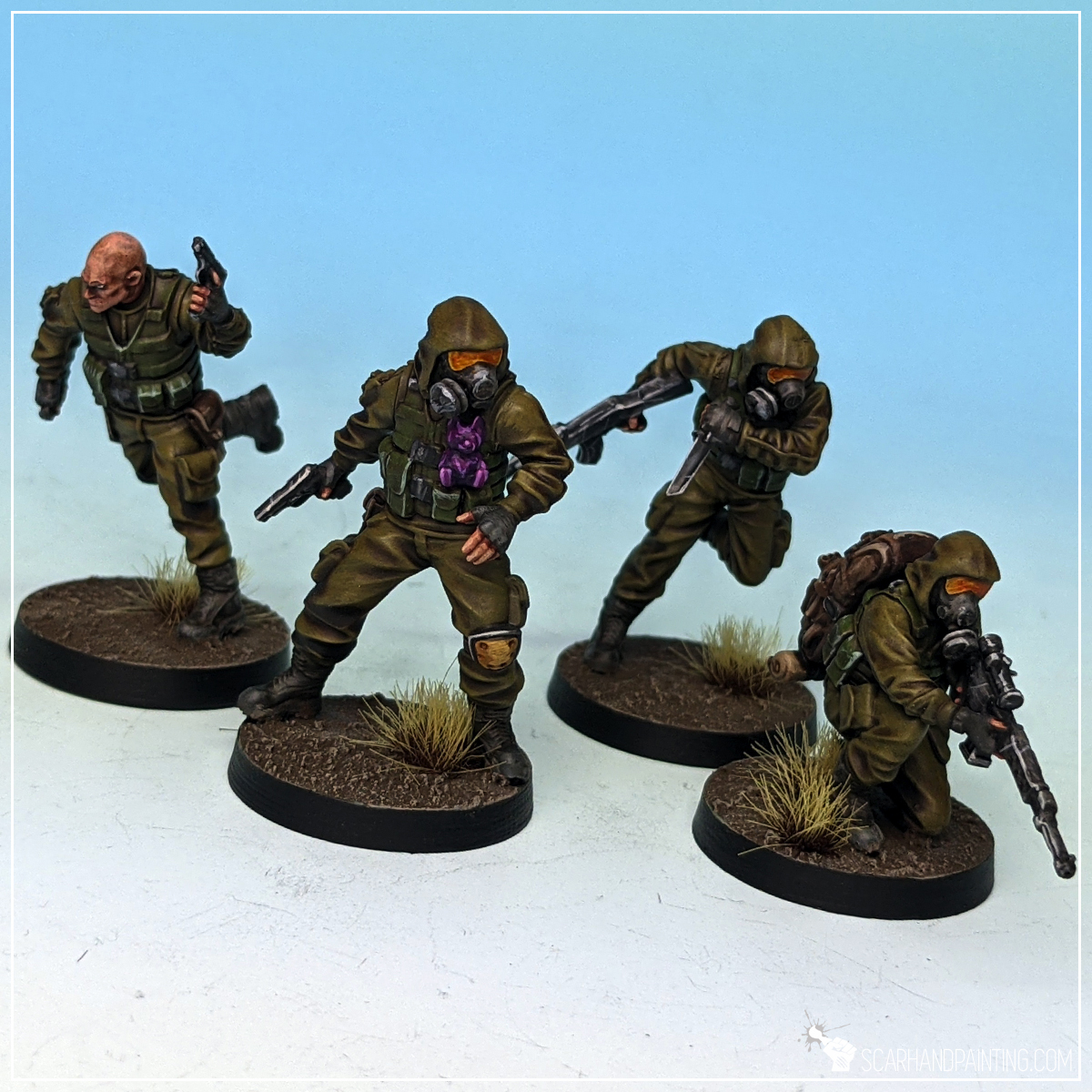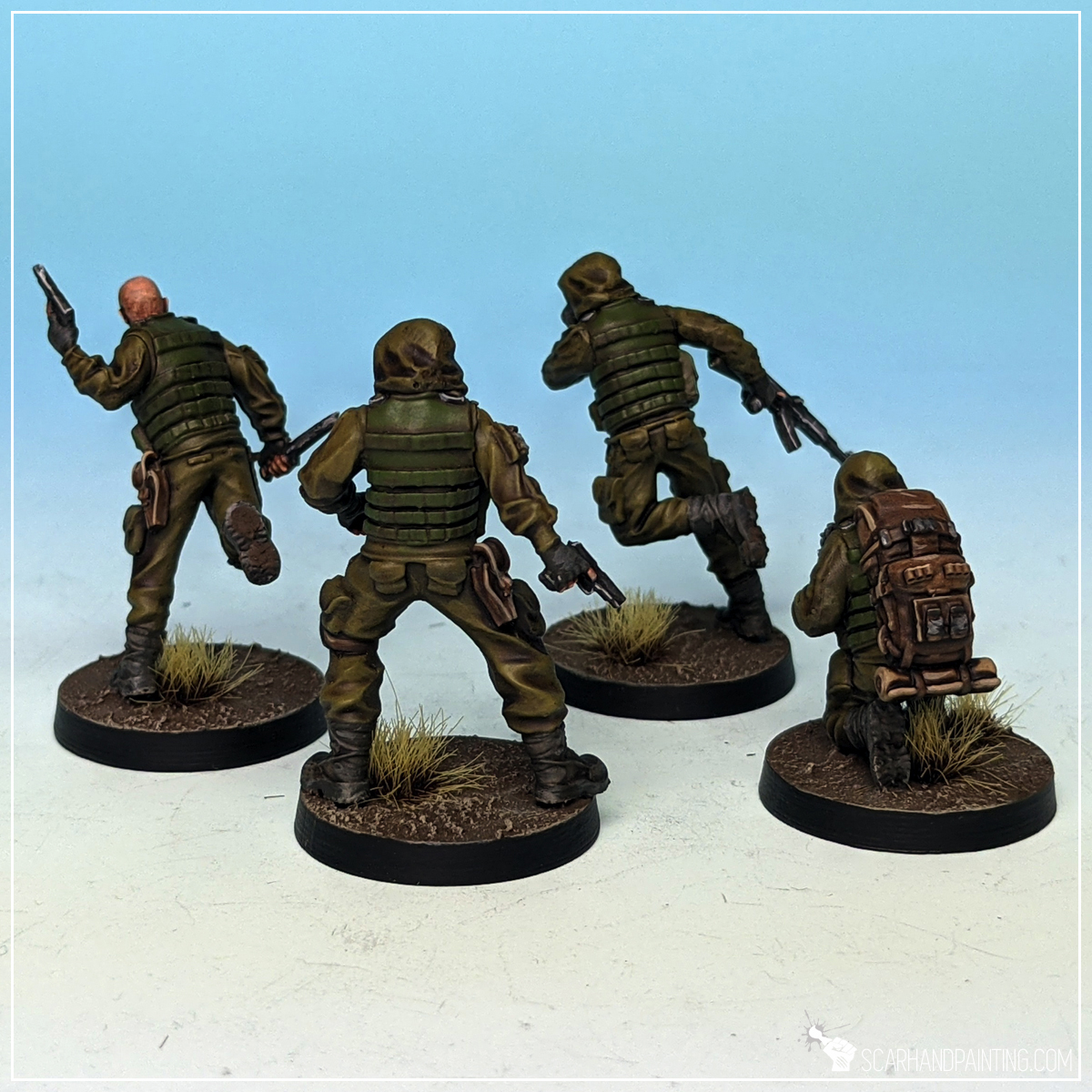- contact@scarhandpainting.com


Welcome to Painting Road to Survival Stalkers tutorial. Here I will present to you a Step-by-step of an easy and fast painting process for Orzol Studio’s Stalkers team from the Post-apo Survivors Kickstarter.
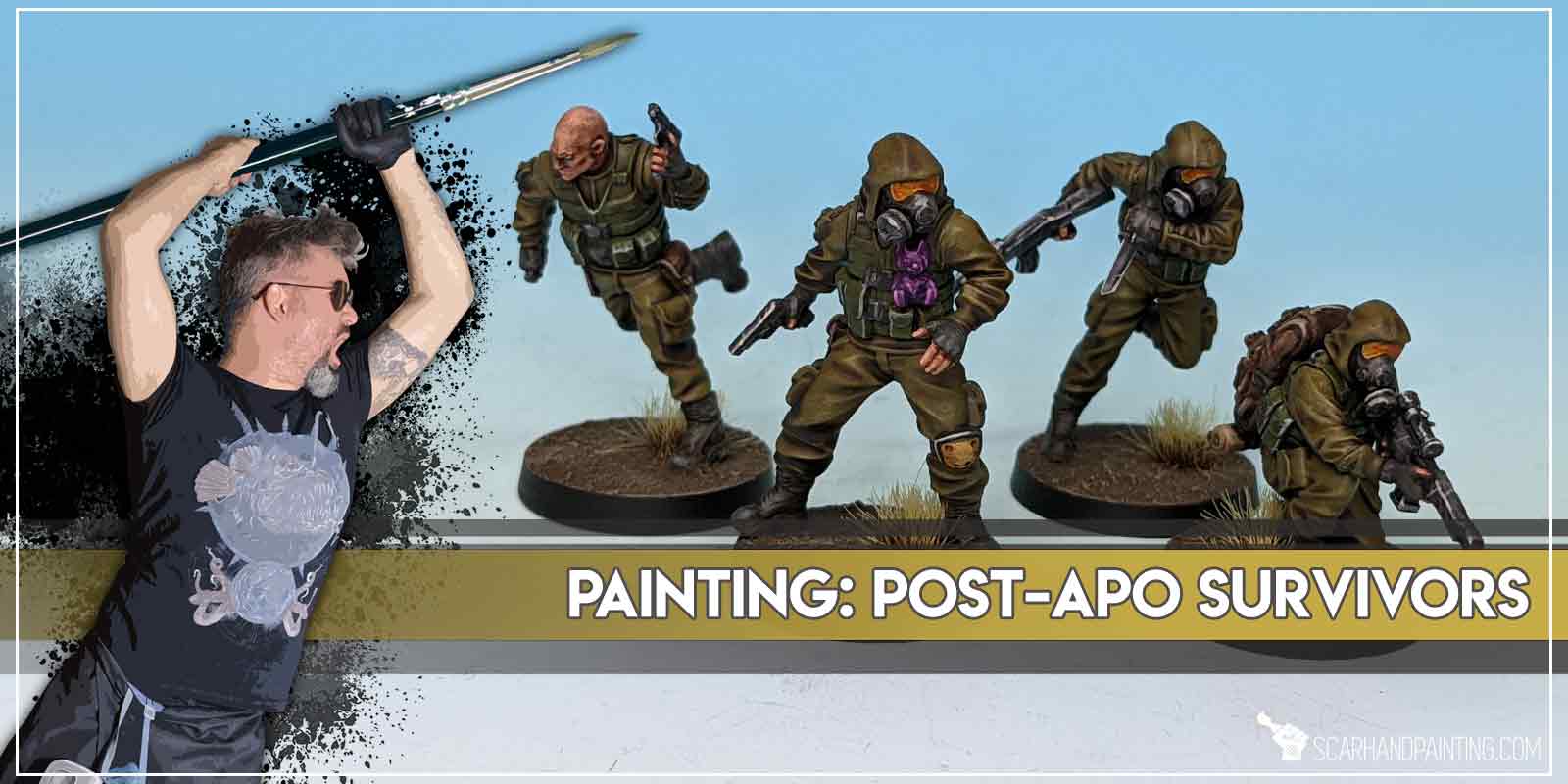
Before we start, some notes:

Step one: Undercoat
I applied a strong layer of Citadel Chaos Black spray. I prefer spray over manual application, but this is just a personal preference. Any matt black undercoat will do, as long as it’s thorough.
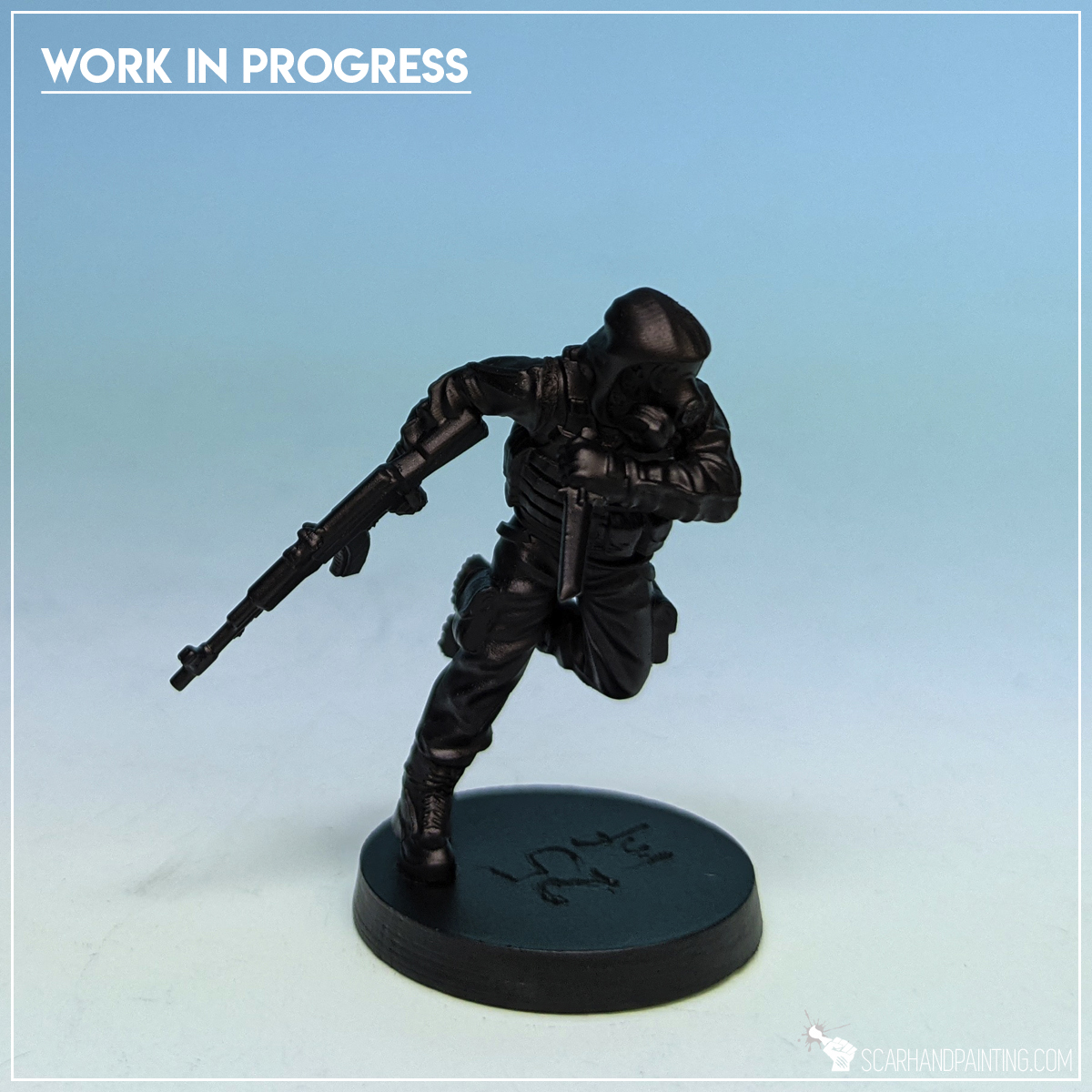
Step two: Uniform
I started by applying a strong layer of Vallejo Dark Green RLM71 (air) onto entire uniform. I used an airbrush for this, but it is not necessary. This layer might as well be applied manually, but might take few runs to look smooth and solid. Although boots, weapons and other detail got painted alongside the uniform, it’s not a problem. If you switch to manual painting you don’t have to worry about messing these up at this stage of paint job.
Next I airbrushed Vallejo Interior Green (air) over previous layer. Similarly to Dark Green this one can be done manually and follows same philosophy.
I switched to manual painting and with a basecoat size brush, flatbrushed a mix of Vallejo Interior Green (air) 1:1 Vallejo Heavy Khaki over the miniature. I then used a more precise brush and highlighted some edges with the same color mix.
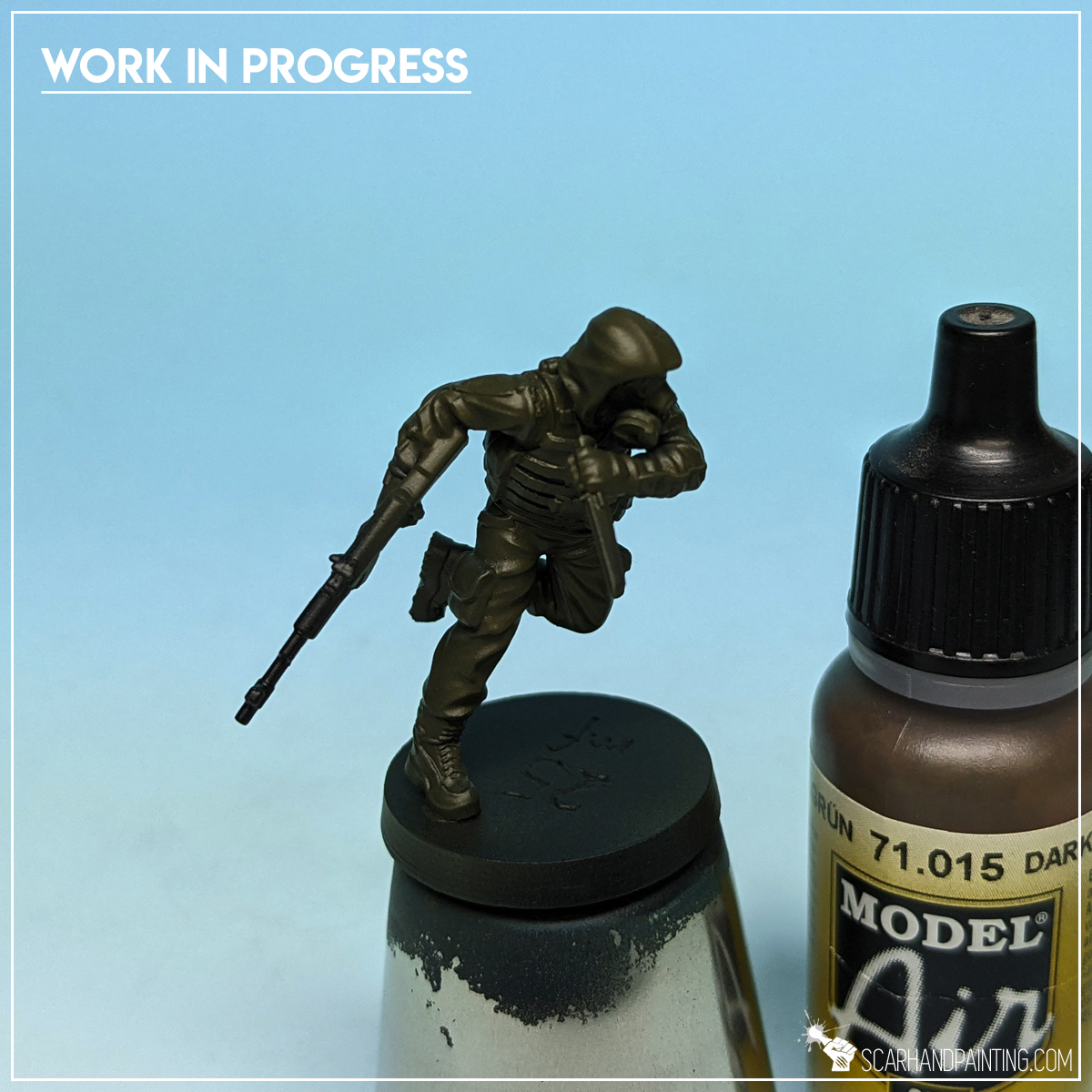
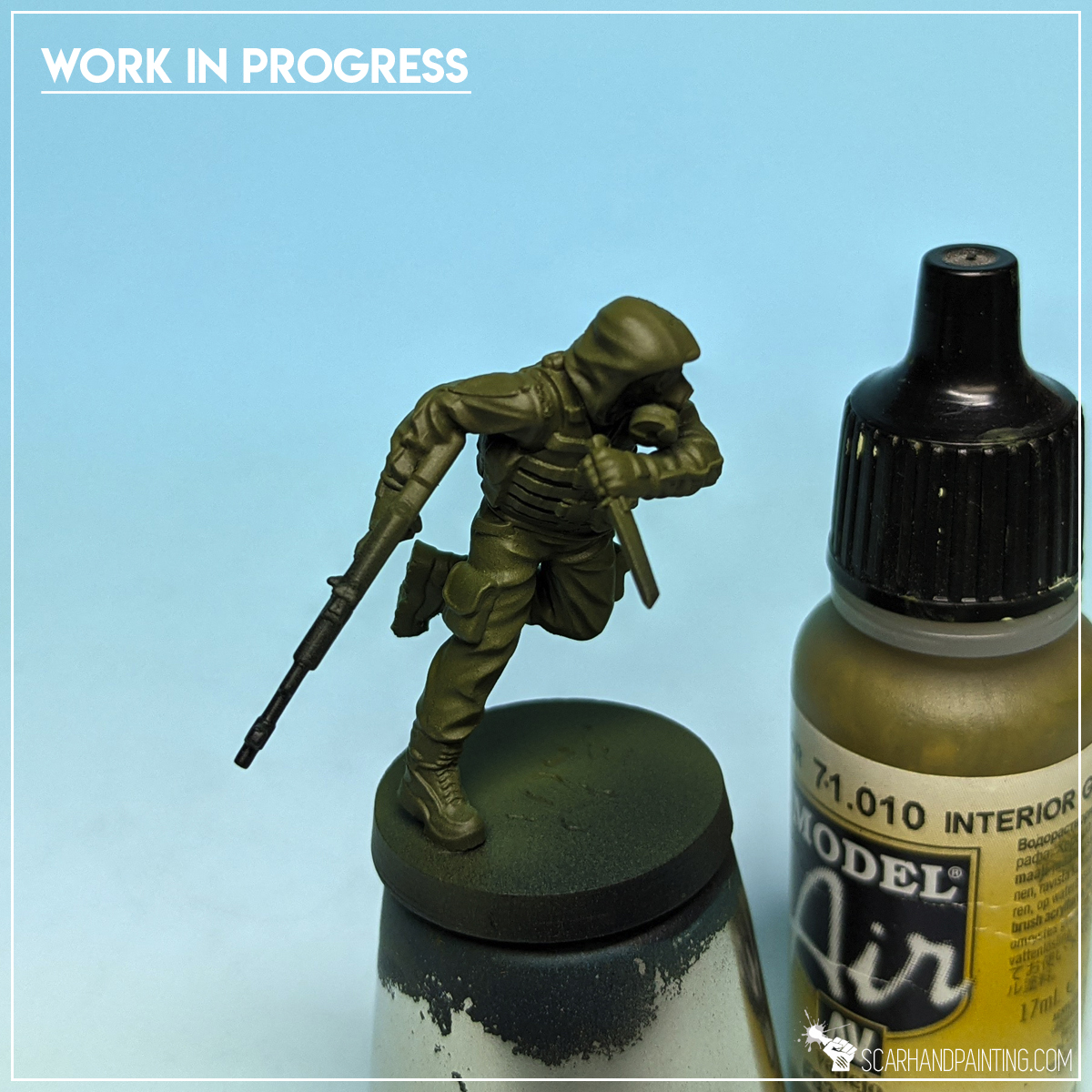
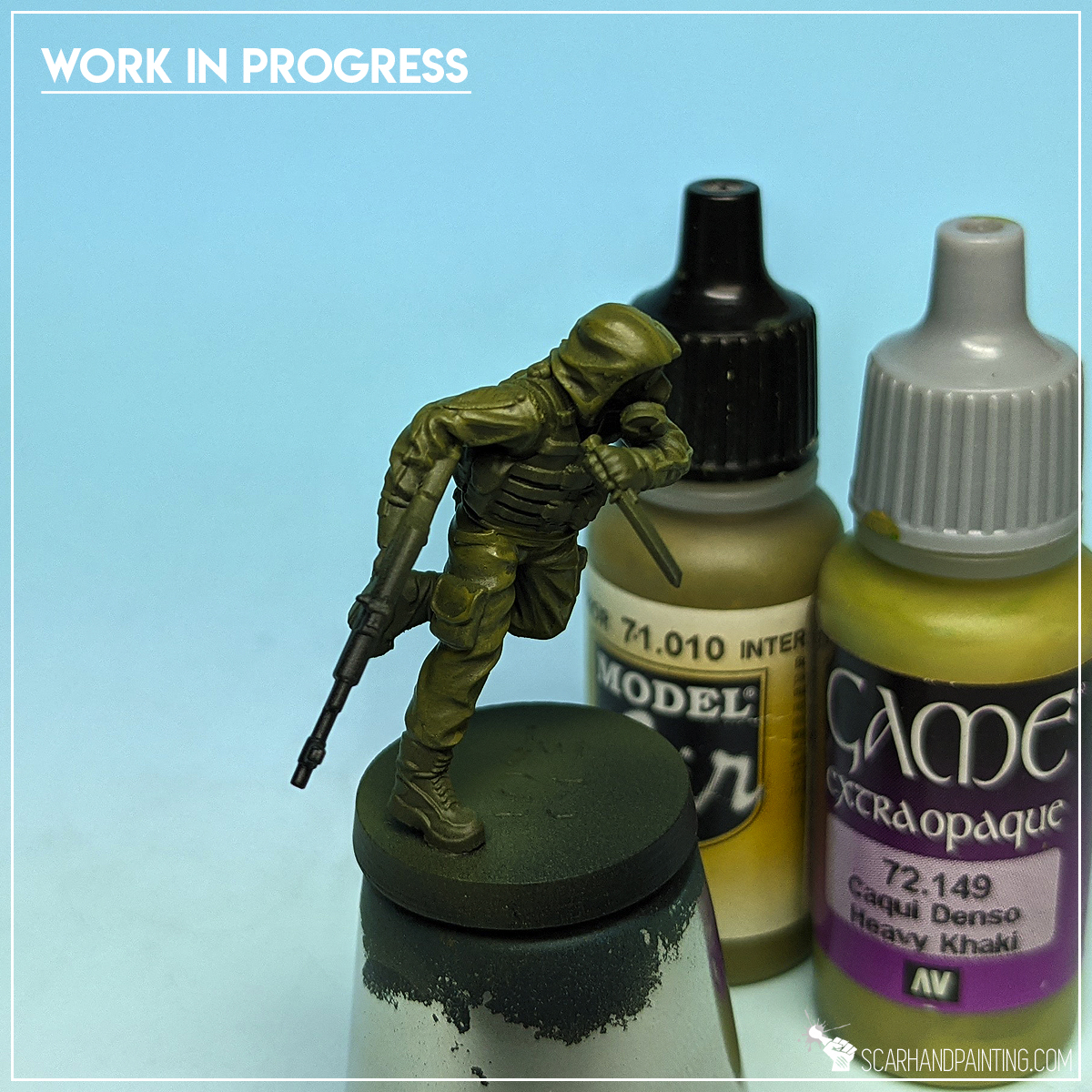
Step three: Vest
With a solid color underneath a single layer of Vallejo Russian Green (air) was enough to provide a smooth base for the vest. The key was to avoid messing up all the bright uniform around. Because of that I outlined the vest with a precise brush and only then switched for a larger brush to gain speed.
Next I flatbrushed a mix of Vallejo Russian Green 1:1 Vallejo Olive Green over previous layer. This provided nice thickness, something the upcoming Wash will work good on.
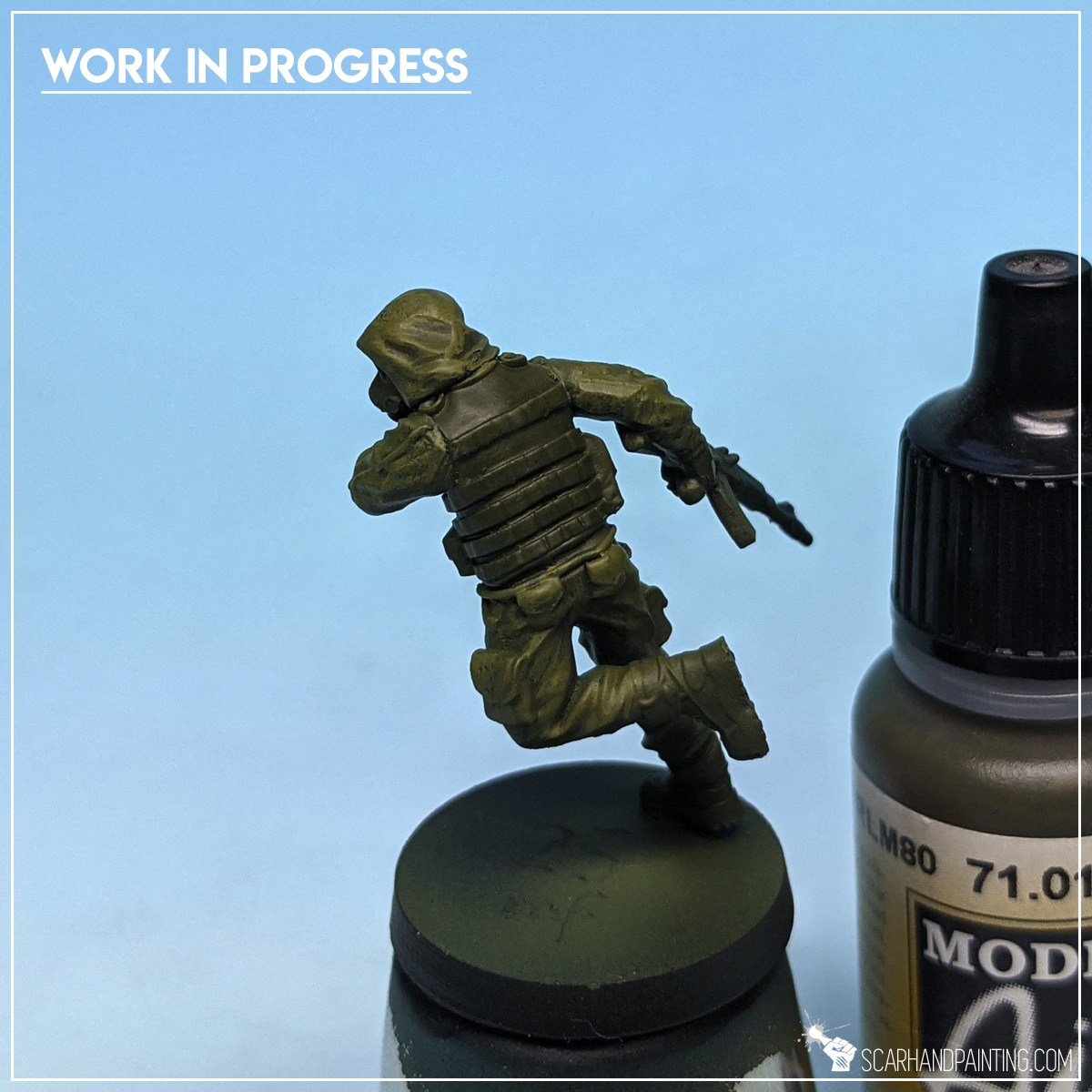
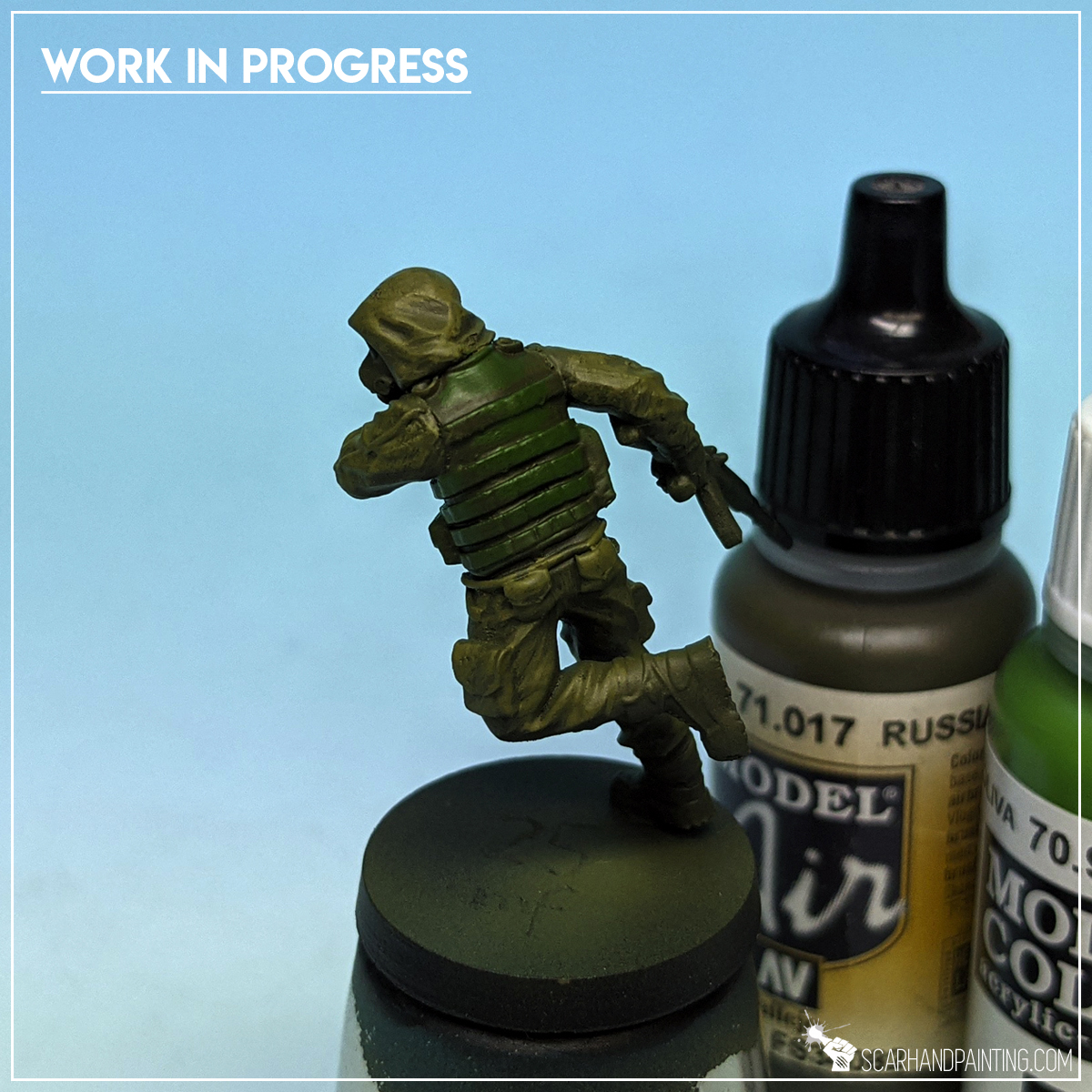
Step four: Boots, Gloves, Mask
Using a small brush I applied a strong, precise layer of Vallejo Panzer Dark Grey (air) onto boots, mask, gloves, weapons and buckles.
I then switched to Vallejo Medium Sea Grey, thinned it down with medium and applied a somehow misty, irregular layer over Panzer Dark Grey, leaving spots of previous color visible. I deliberately left weapons and buckles be for the time being.
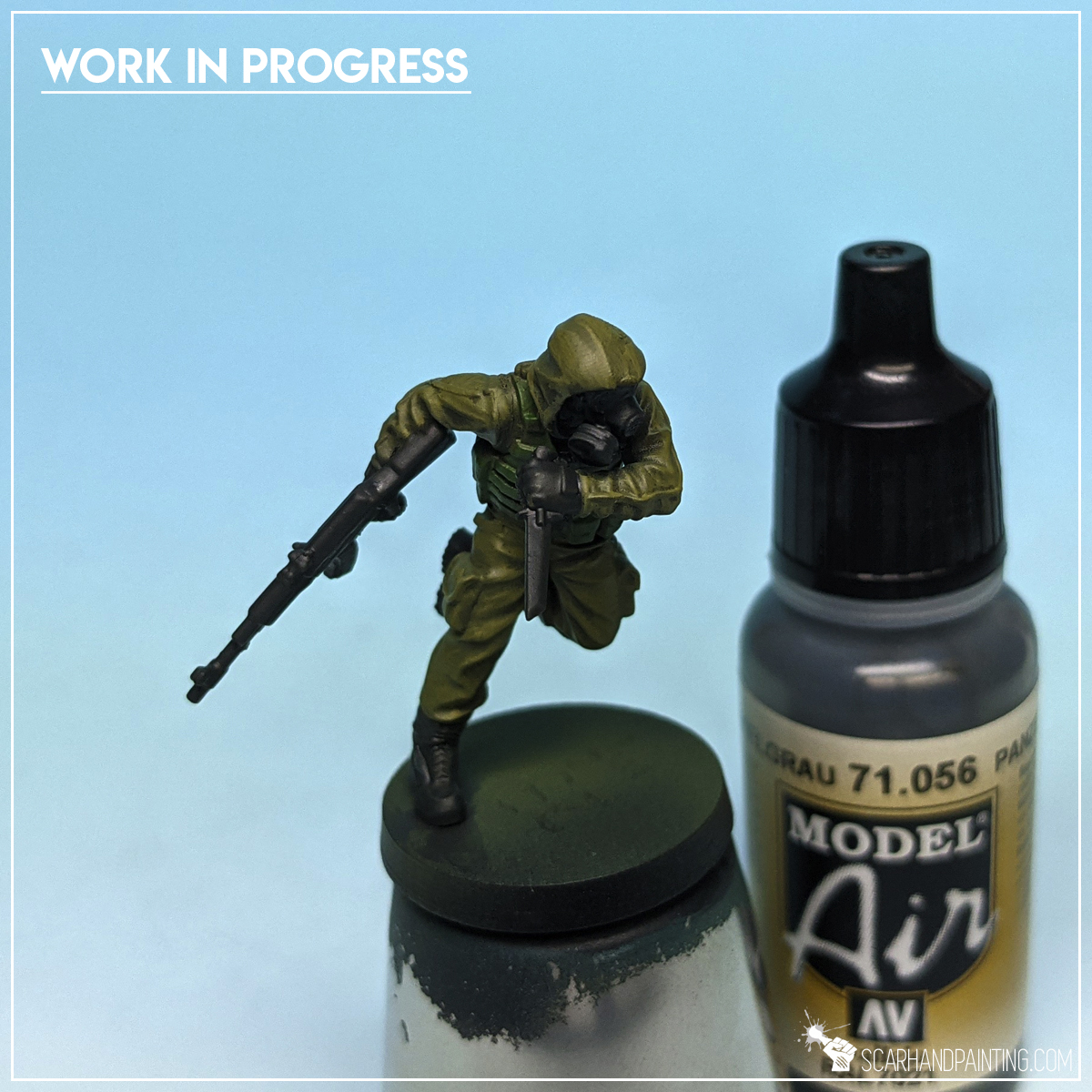

Step five: Brown wash
Using a large, soft brush I applied a lot of Games Workshop Agrax Earthshade onto entire miniature. After a while I used a clean precise brush to strip some of the paint from areas where too much pigmentation covered all the detail. I left the miniature to dry after that.
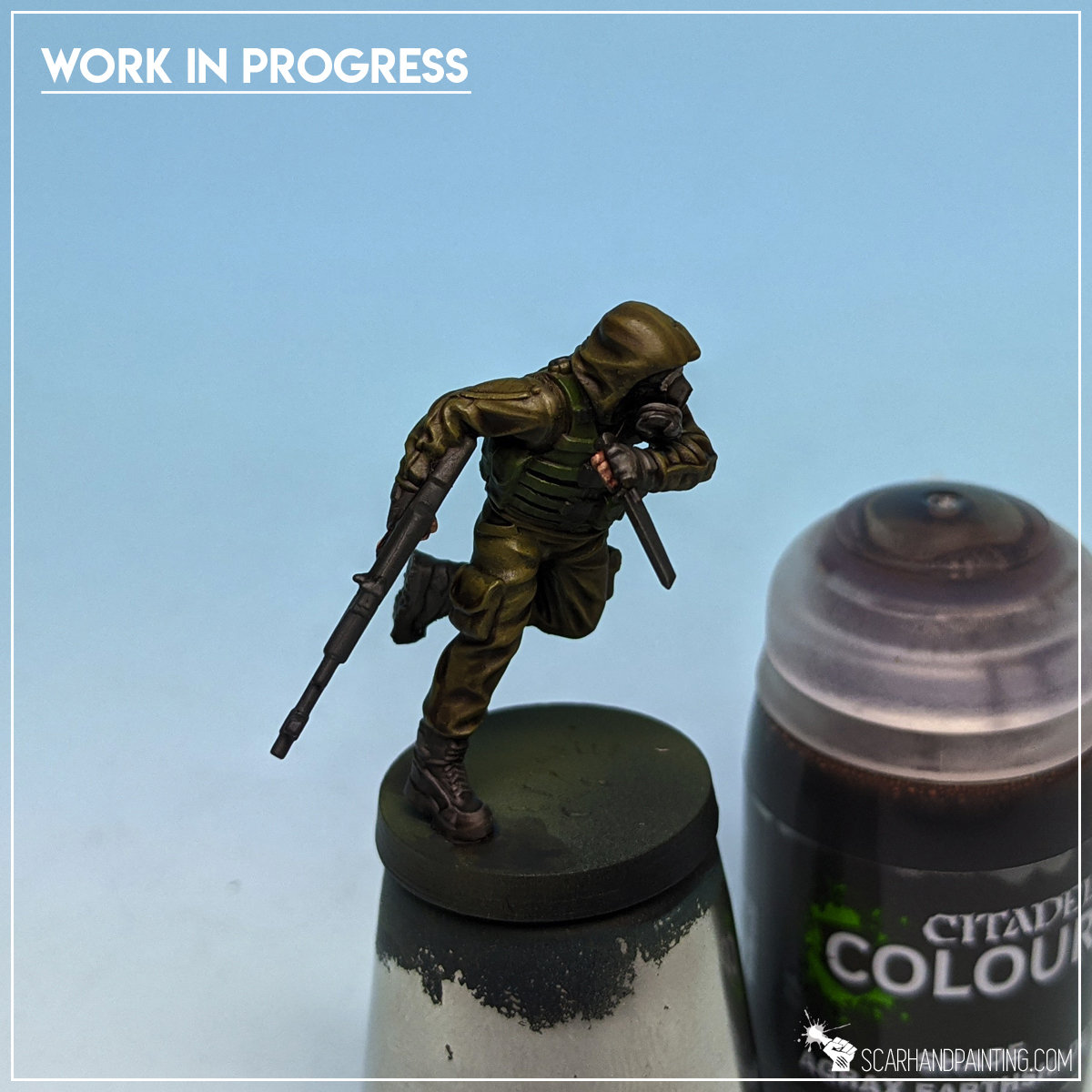
Step six: Weapons
I applied a partially translucent layer of thinned down Vallejo Wolf Grey (air) onto weapons and buckles. I moved a brush alongside blade and barrel, trying to leave pigmentation on the edges.
I then highlighted weapons with Games Workshop Pallid Wych Flesh. Mostly on the edges and with no dillution.
I then followed up by applying Army Painter Dark Tone Ink. Similar to Agrax, I let the paint flow then removed the excess and let the thing dry.
Finally I edge highlighted with Games Workshop Pallid Wych Flesh. This time around I included gas mask filter plus added few scratches here and there.

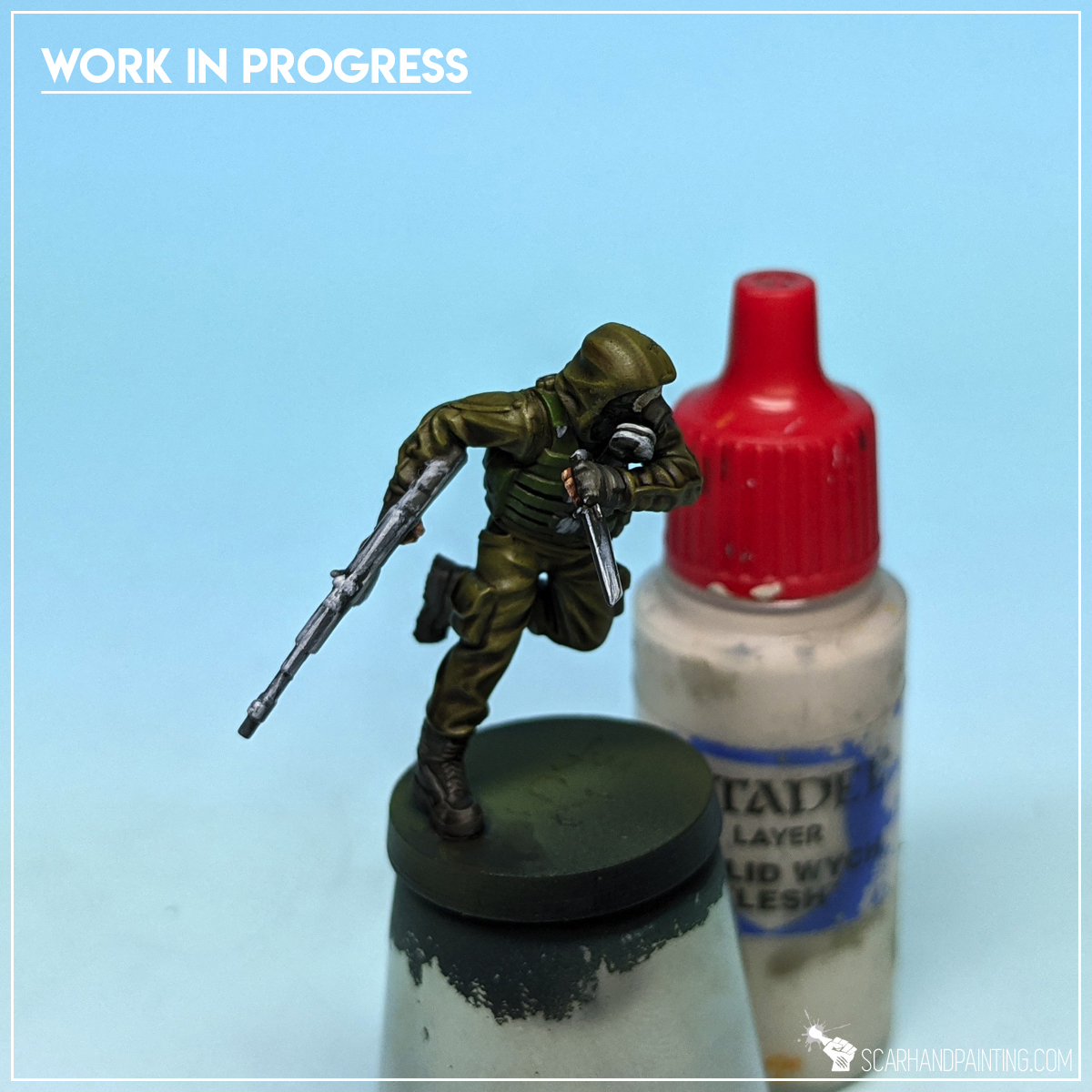
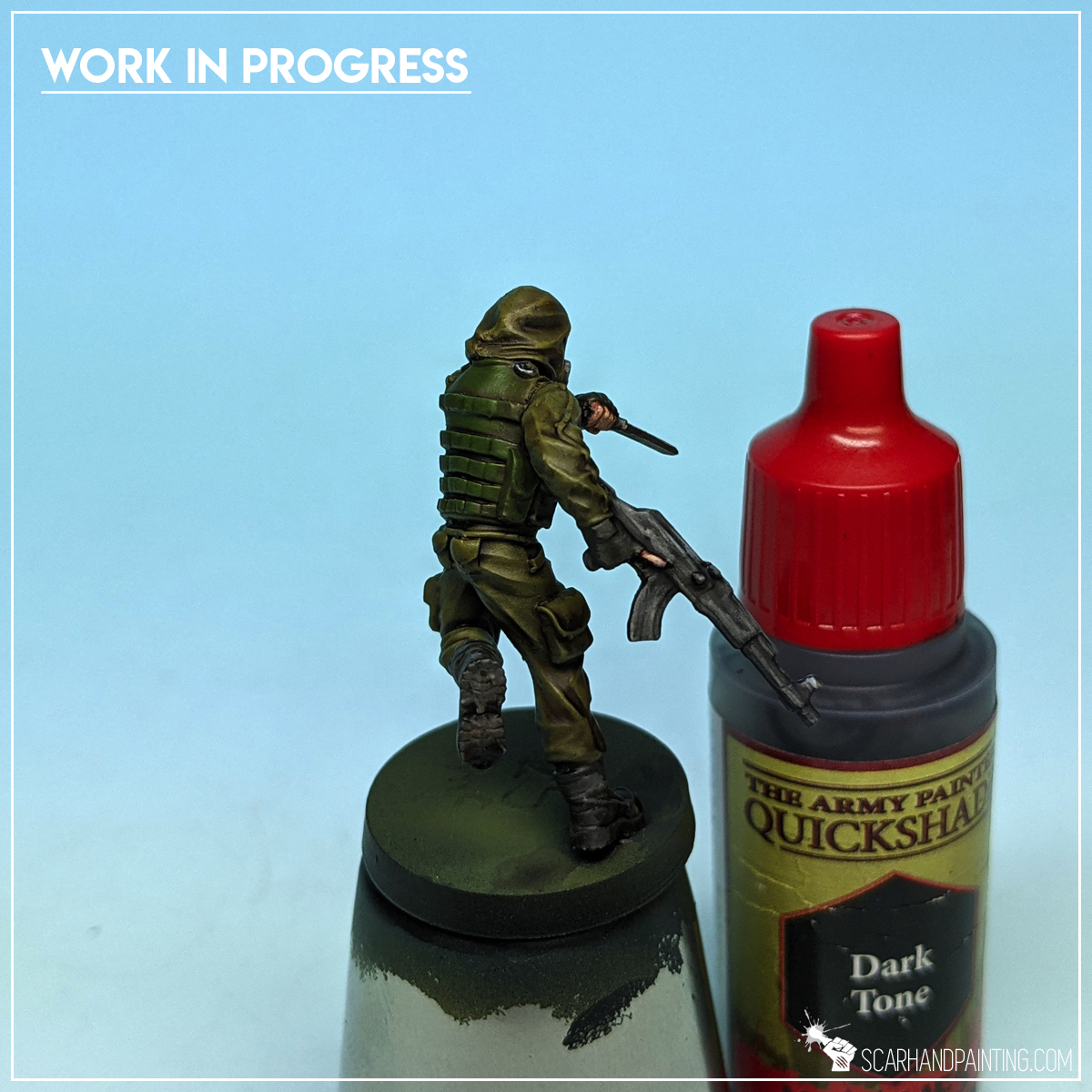
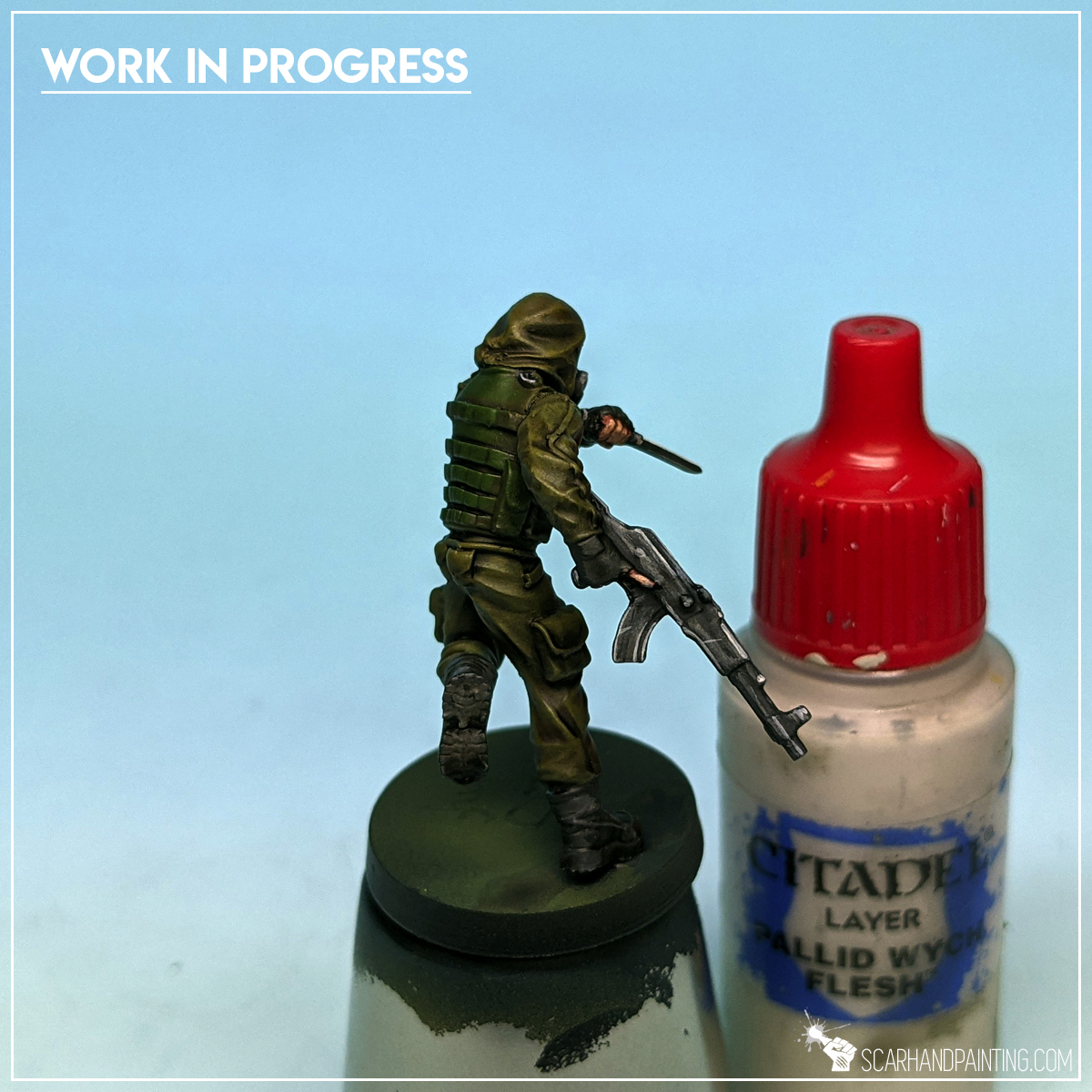
Step seven: Skin & Eyes
I started painting skin by applying a solid layer of slightly thinned down Vallejo Tan. This layer had to be precise and I avoided going out of line and messing up paintjob around it. I deliberately started painting skin before applying Agrax Earthshade Wash from previous tutorial so that any corrections could be done much easier, if required.
I then applied Games Workshop Dwarf Flesh onto previous layer. Same premise, except I left just a bit of Tan visible in the recesses.
Next I highlighted skin with Vallejo Flesh (air), which due to it’s consistency produces a partially translucent effect. I then re-applied Flesh on top of the head, cheeks and nose.
I followed up with Agrax Earthshade wash (done at Step five: Brown wash).
Finally I highlighted with Games Workshop Dwarf Flesh. I also blended some of the Dwarf Flesh over wash made stains on top of the head.
Painting eyes is a topic on it’s own and I’m not trying to write a book here, so I used a simple method of a single white line followed by a black dot in the middle. Any necessary corrections can be done to your heart’s content by painting over and over till good results are produced.
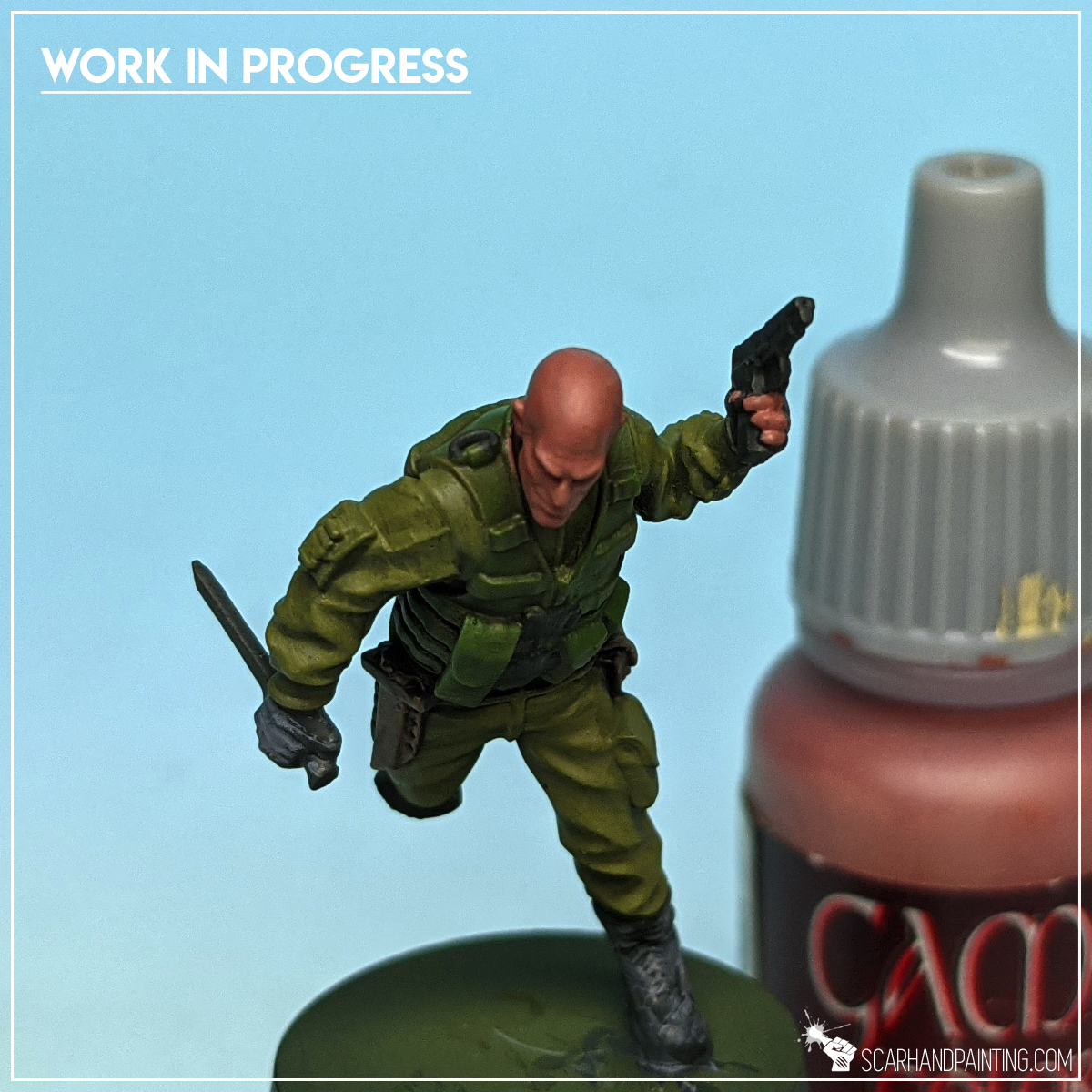
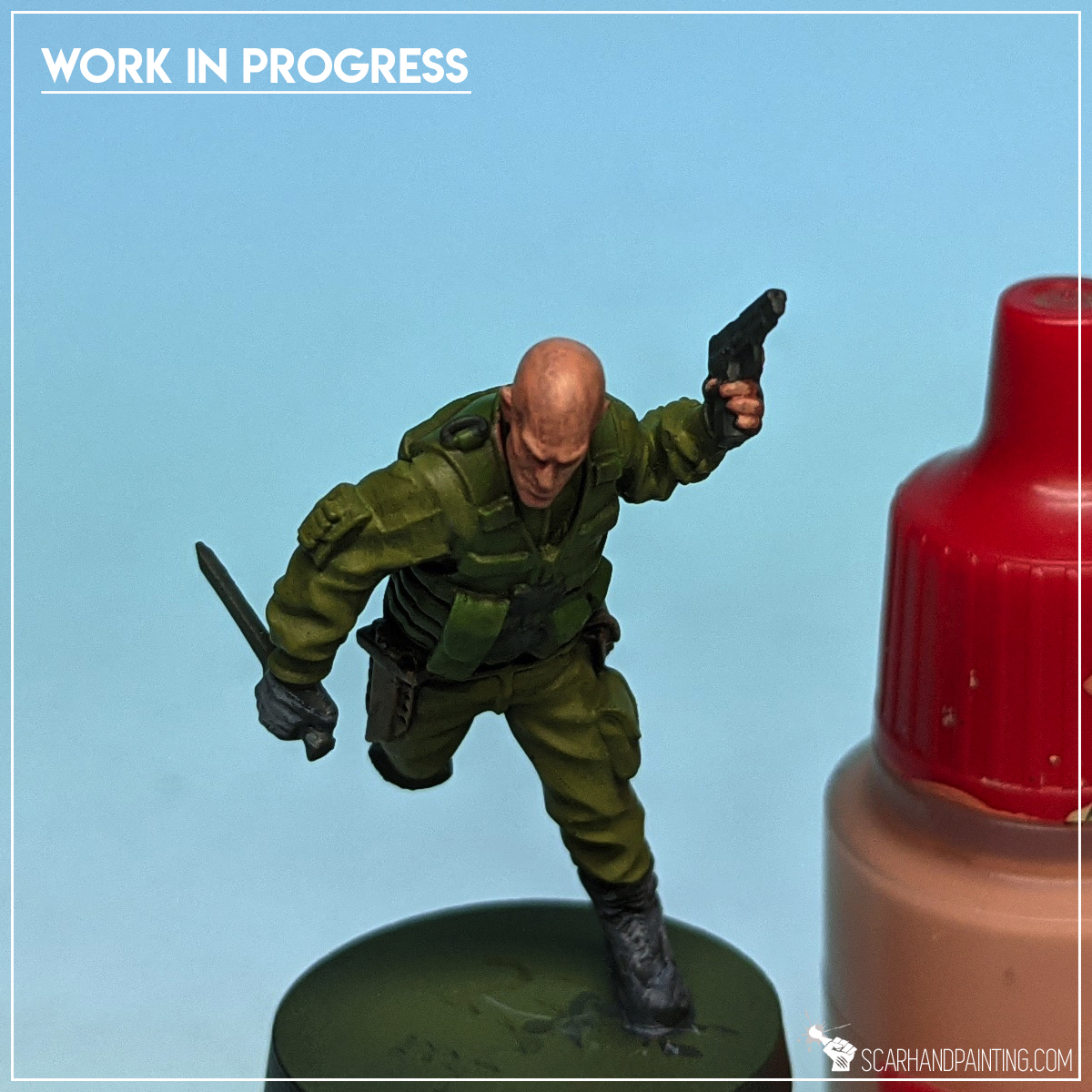
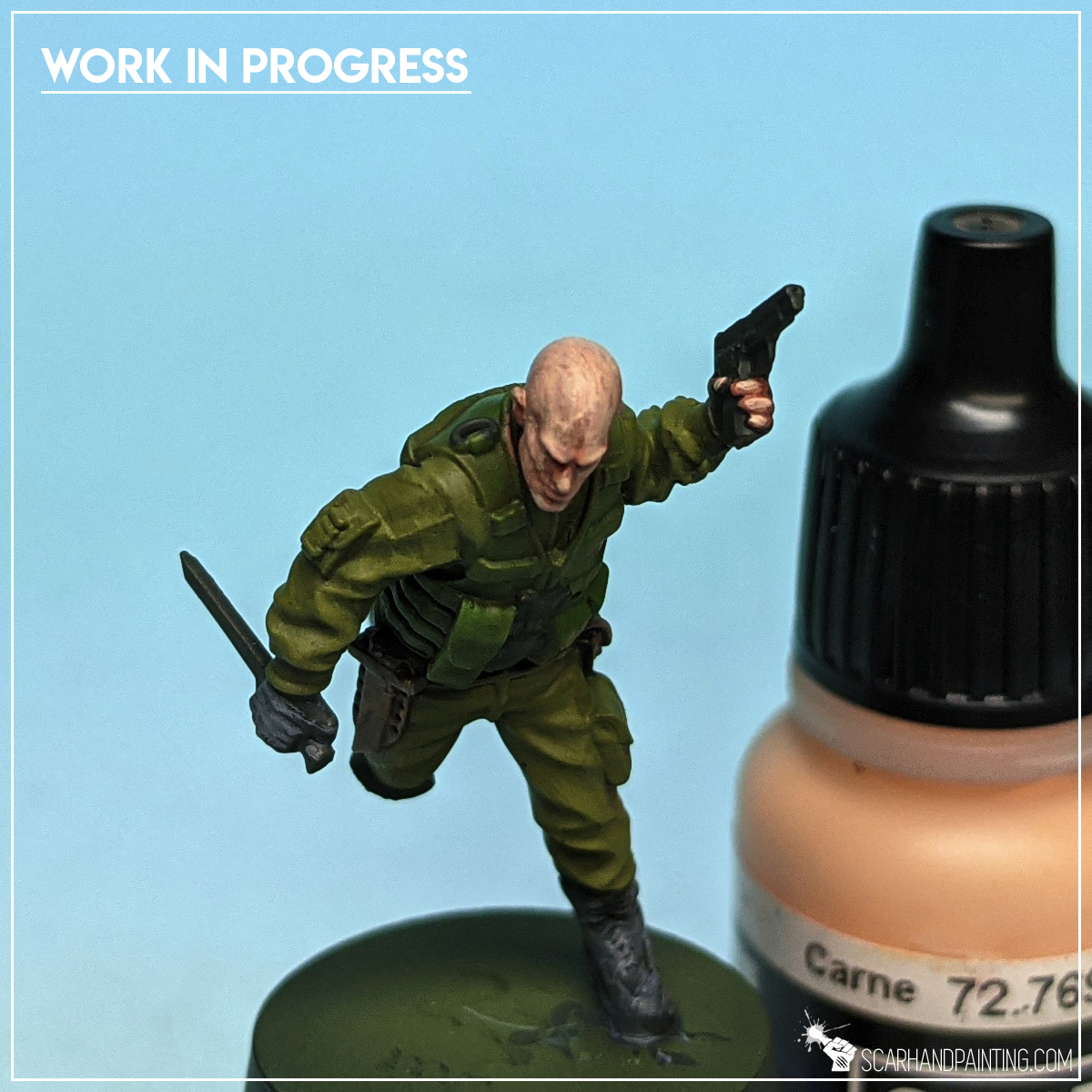
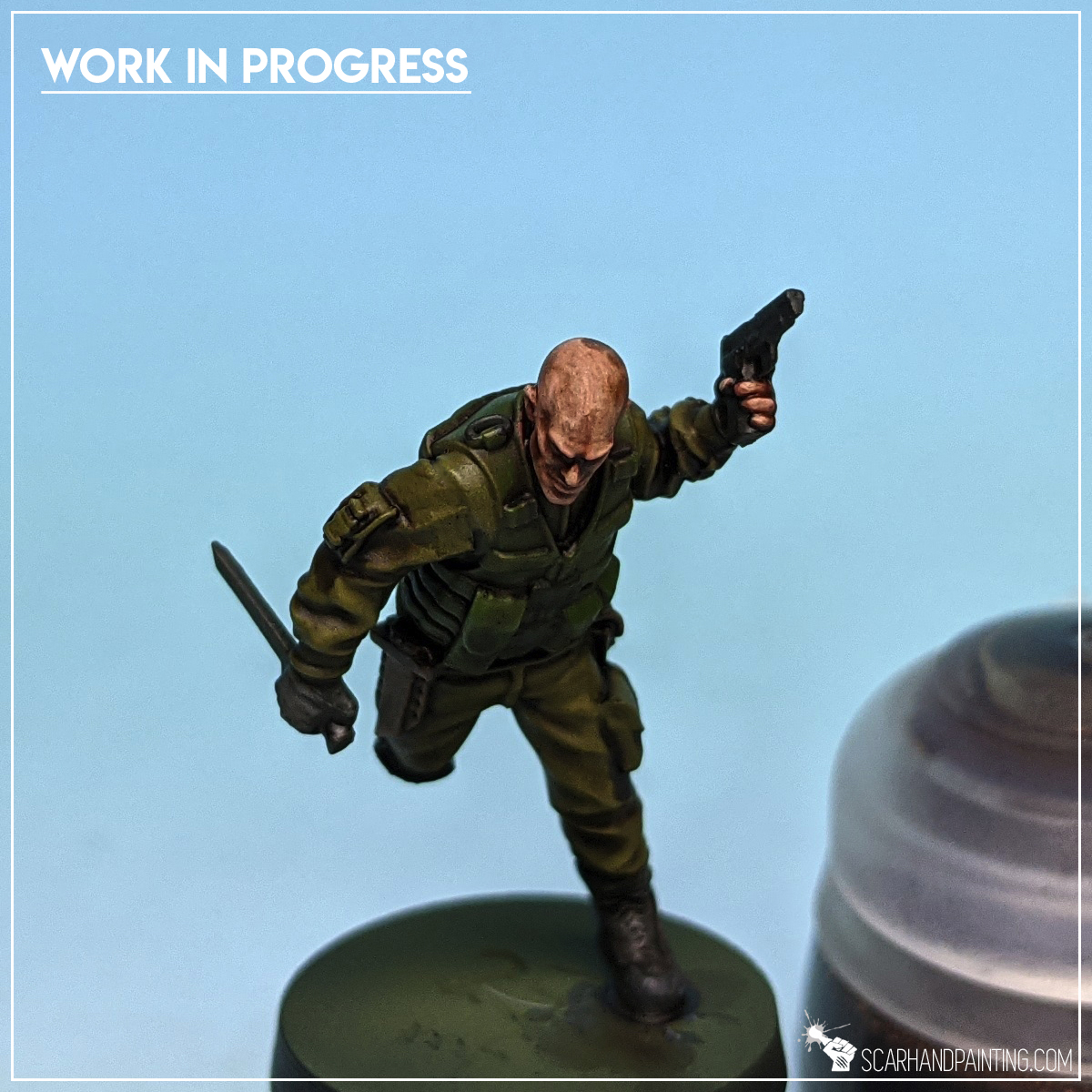
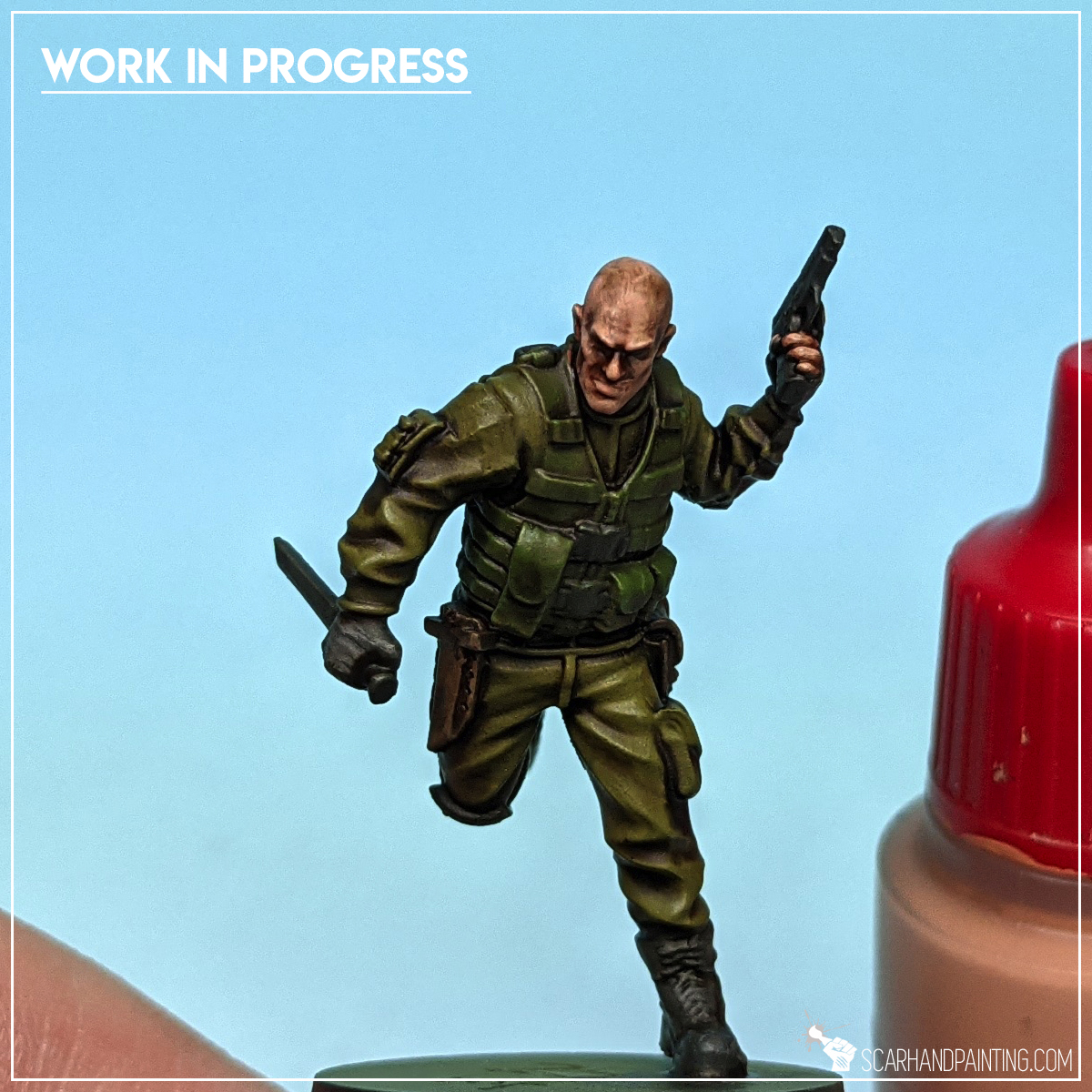
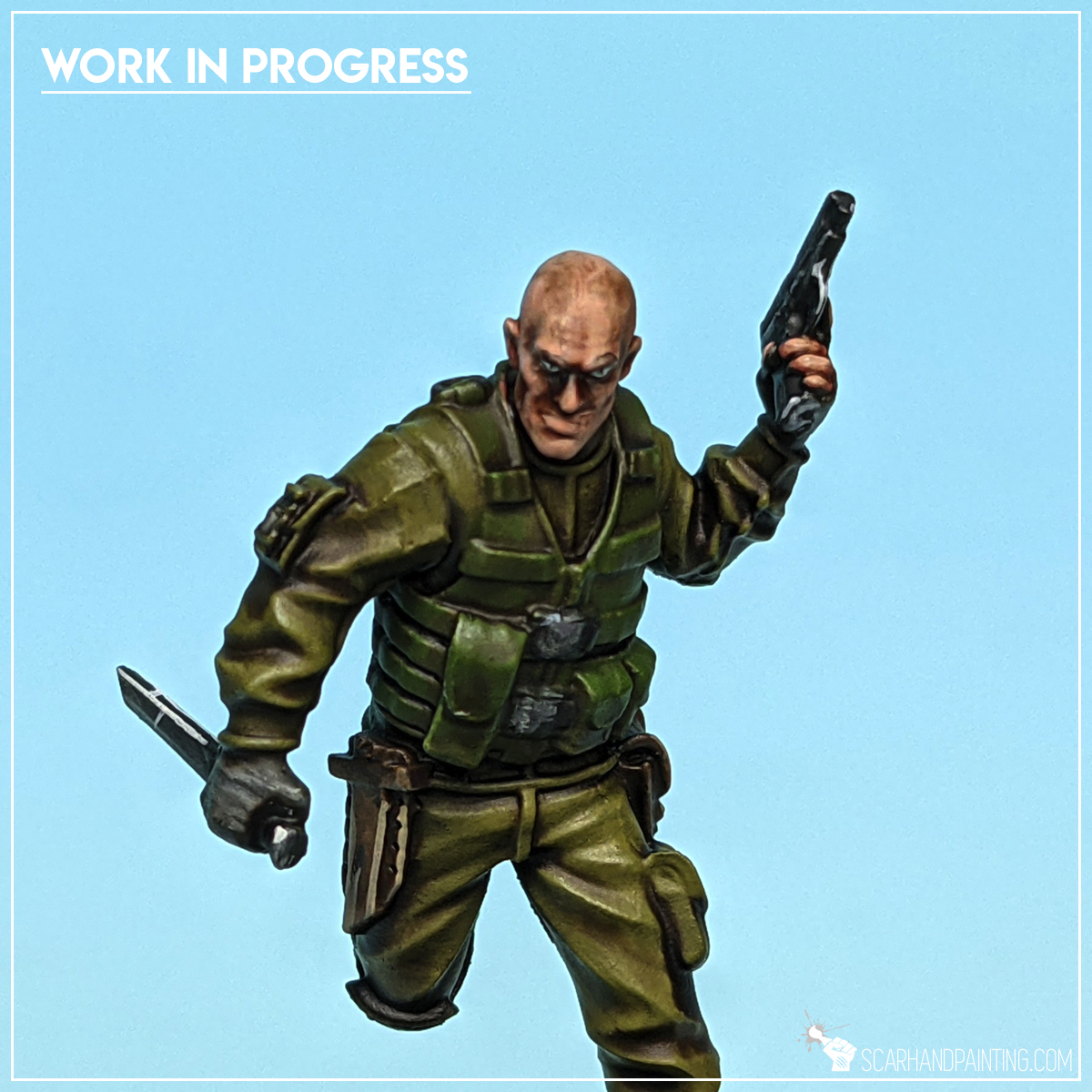
Step eight: Backpack & Holsters
I started with a strong layer of Vallejo Charred Brown (air), ensuring not to leave a mess on top of any previous layer around the backpack.
I then flatbrushed Vallejo Beasty Brown over Charred Brown. No thinning, just paint straight from a bottle and onto a palette before application.
I used Games Workshop Karak Stone for gritty highlights plus painted a blanket strapped at the bottom of the backpack.
I then switched to Vallejo Panzer Dark Grey (air) and re-painted all the buckles grey.
Agrax Earthshade wash followed (done at Step five: Brown wash).
Finally I applied a highlight of Games Workshop Karak Stone onto the edges and middle areas.


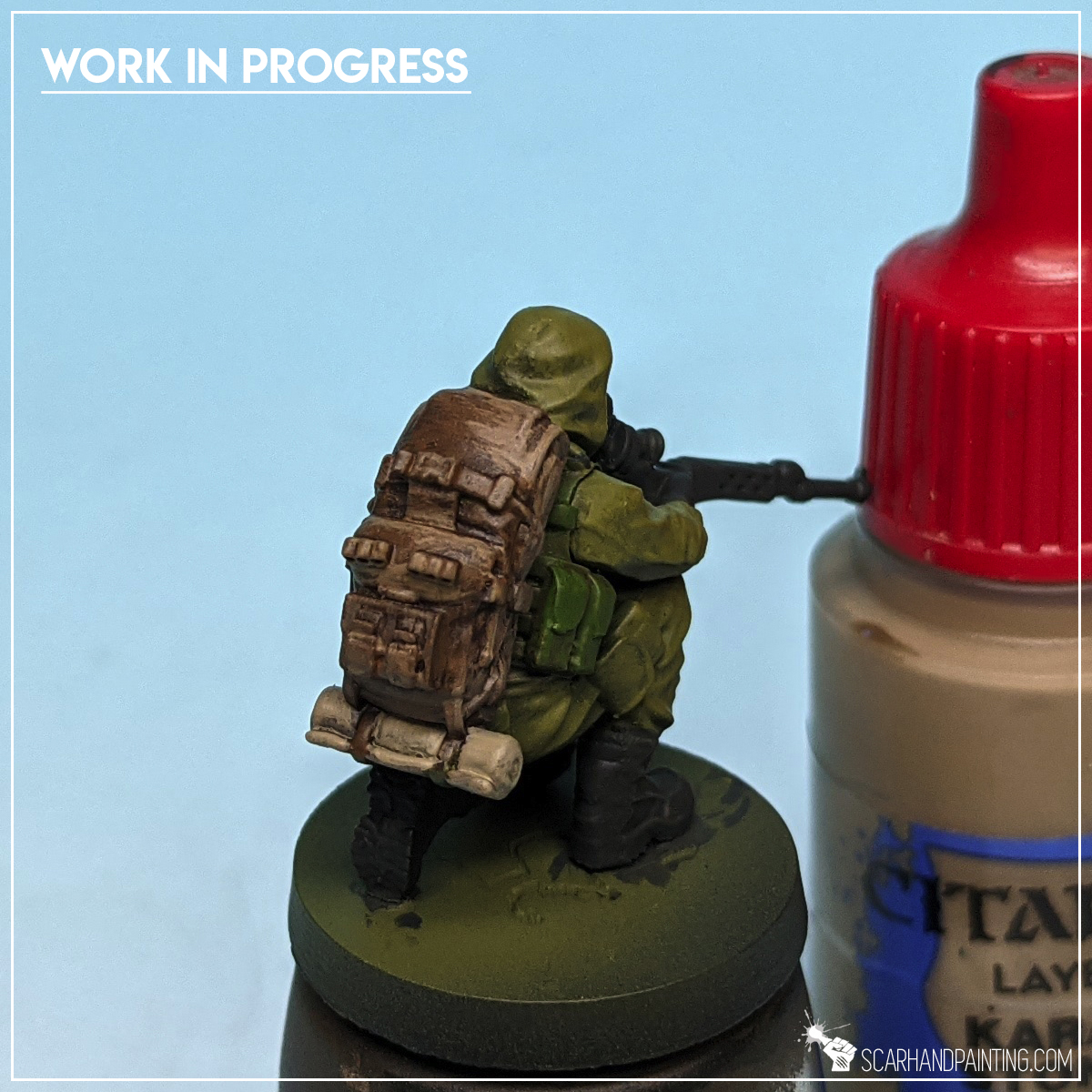
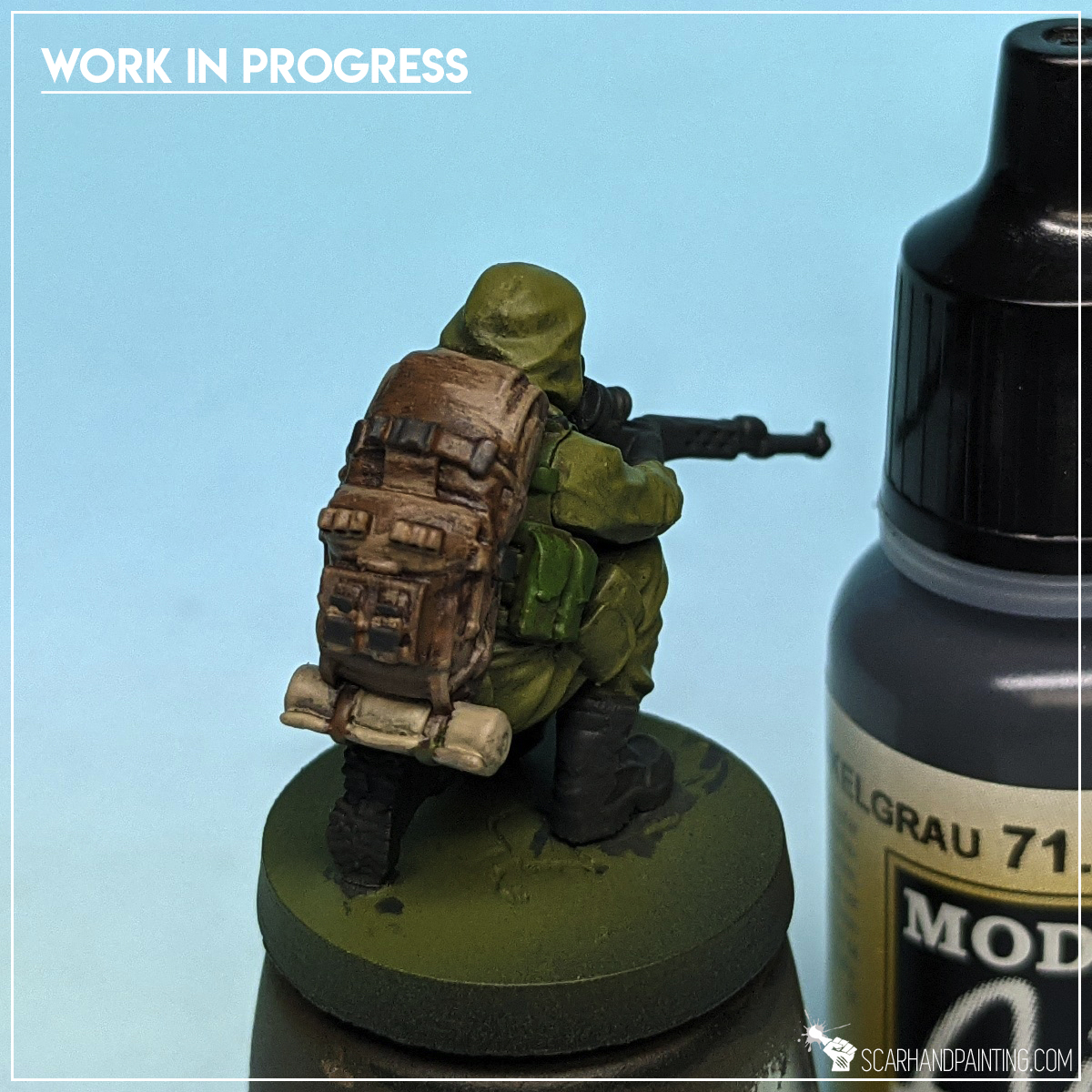
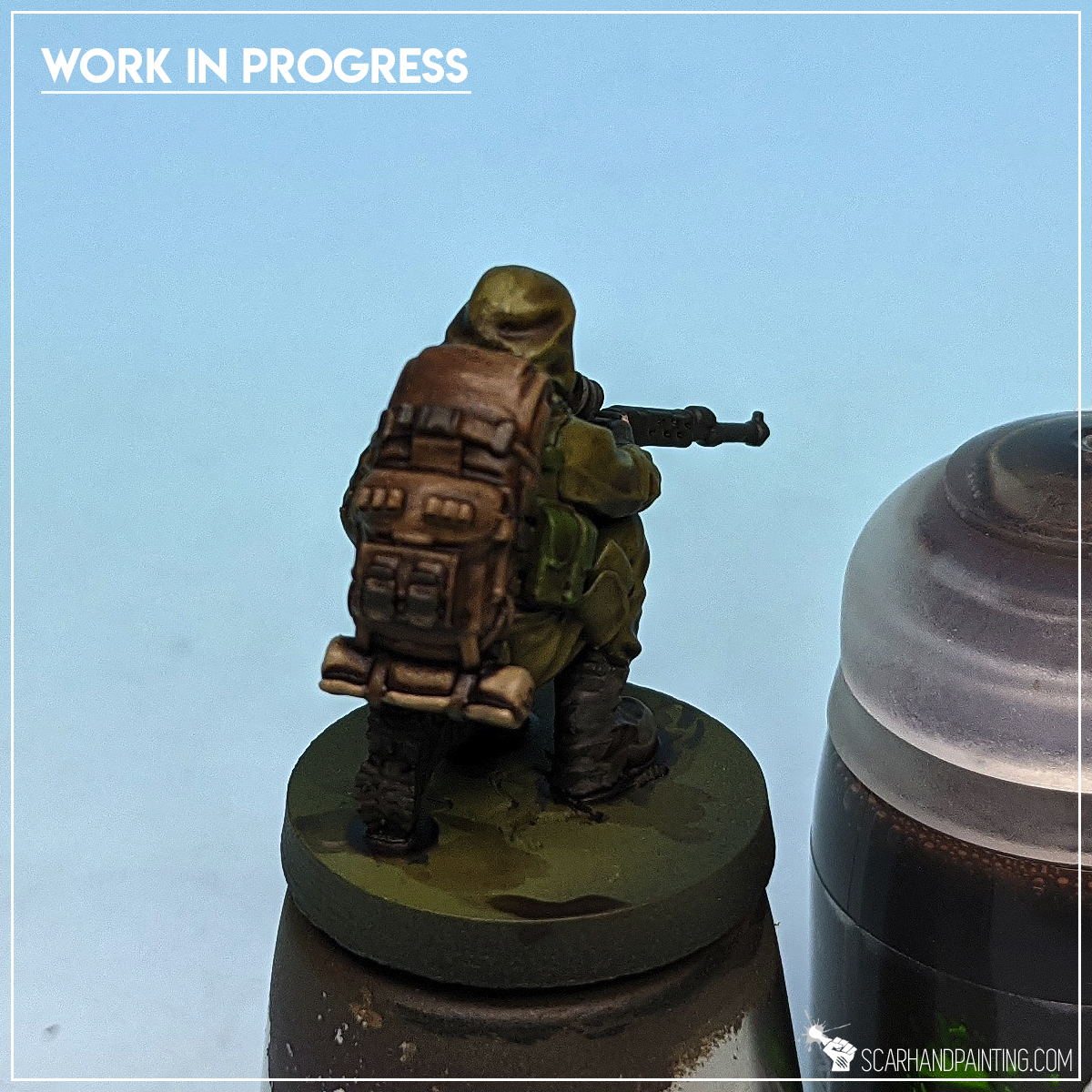
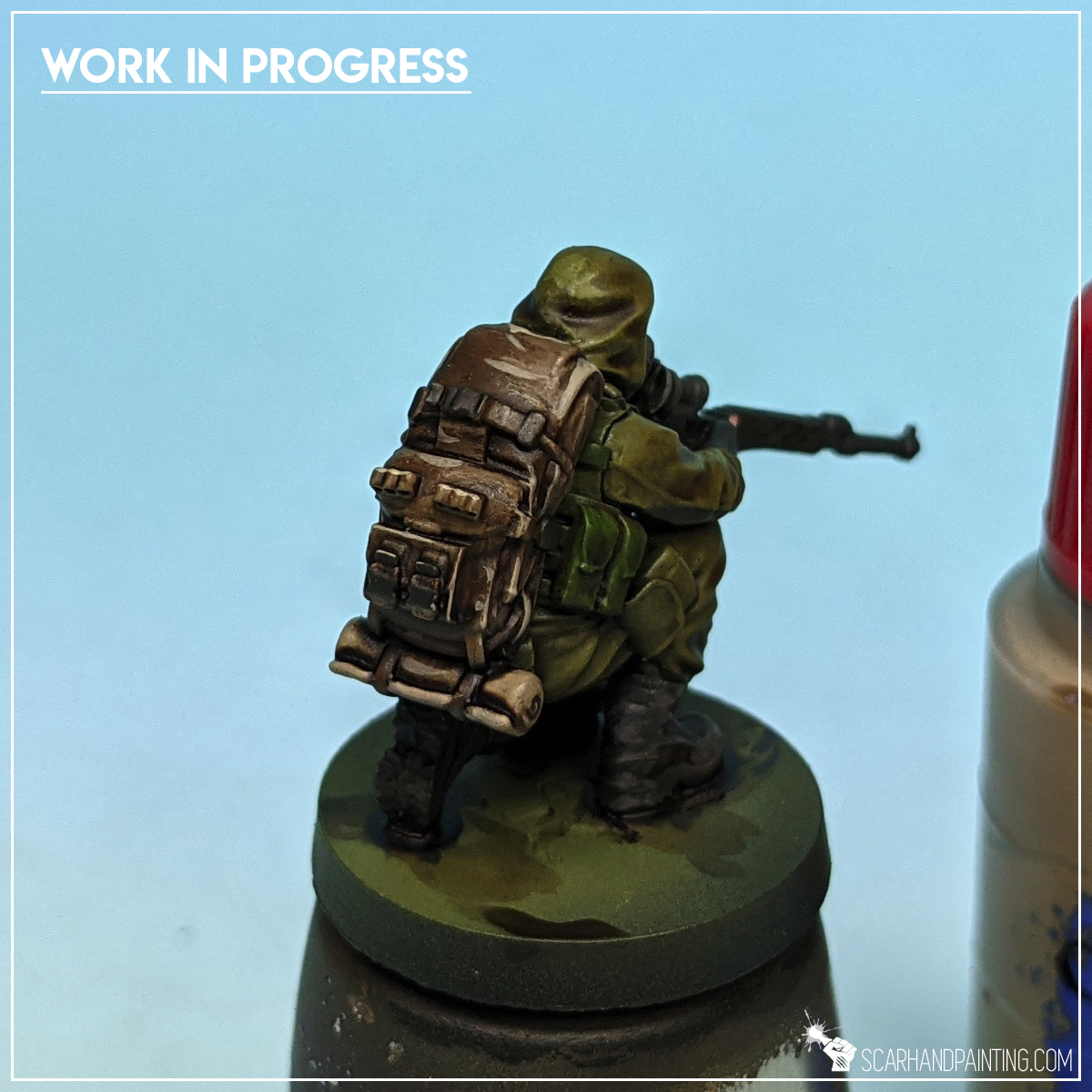
Step nine: Mask Visor
I tried to keep this one extra simple. Started with a gritty, messy layer of Games Workshop Pallid Wych Flesh. No need to be overly precise, nor smooth. The more irregular, diverse the visor looks now, the better the end result.
I then applied slightly thinned down Vallejo Hot Orange (air). Once dry I applied another layer of the same stuff. Done.
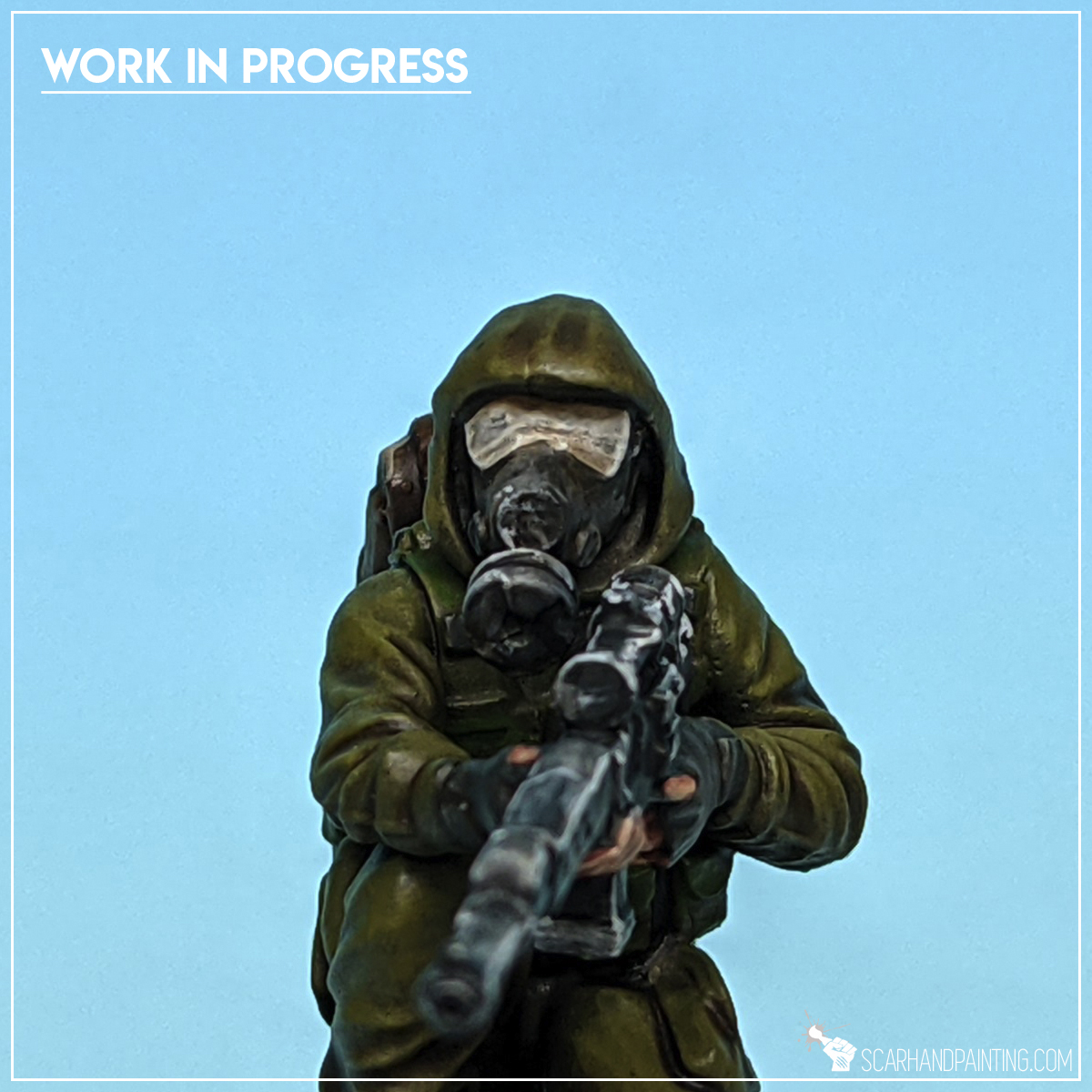
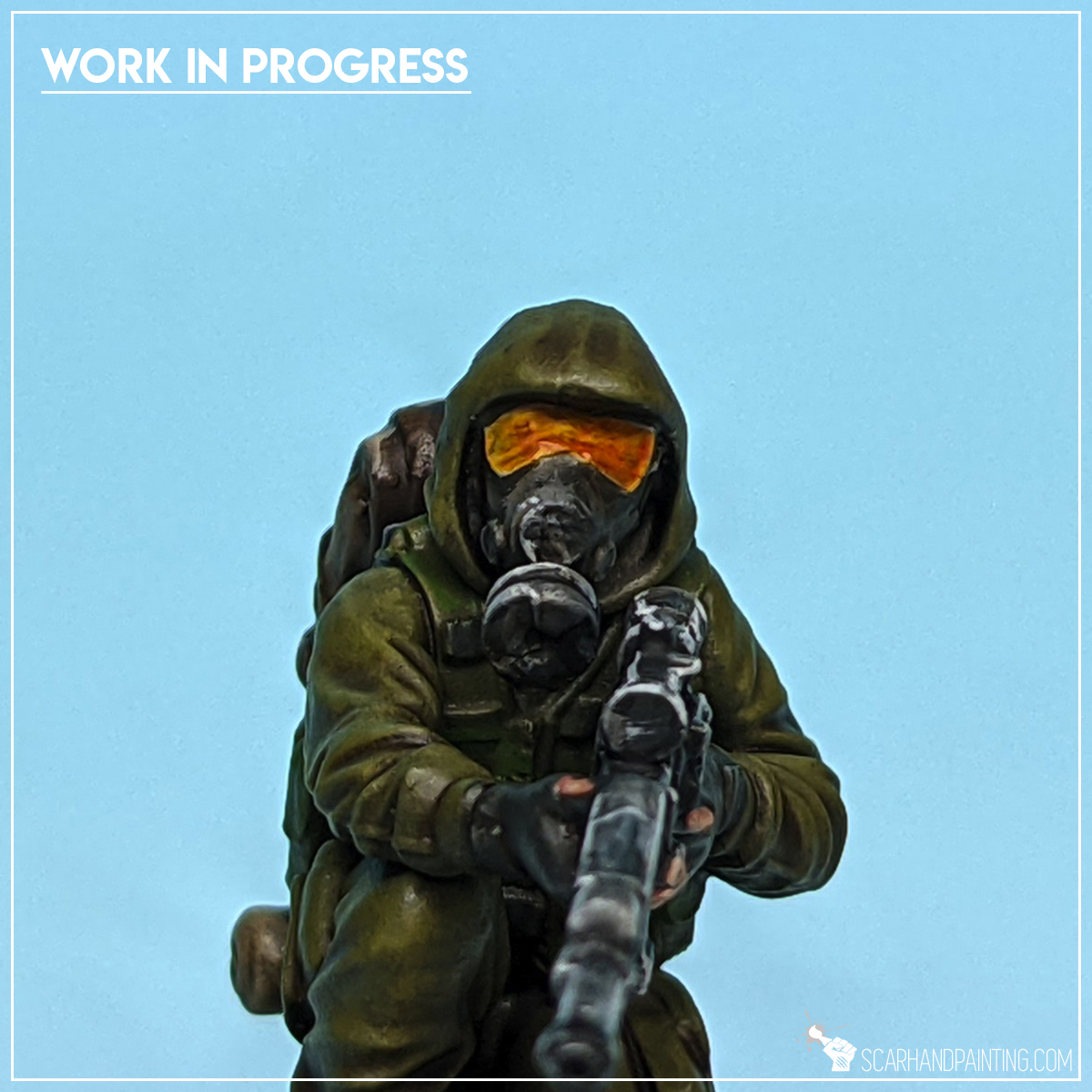
Step ten: Teddy Bear
This one is such a cool detail. I decided to go purple/pink to make it stand out. I started with a solid layer of Vallejo Royal Purple.
I then applied Games Workshop Agrax Earthshade wash (done at Step five: Brown wash).
Once wash dried, I highlighted most exposed areas of the bear with Vallejo Warlord Purple.
I then used Vallejo Squid Pink for final highlight, applying dots and lines on top of most exposed areas.
To bring all layers together I applied a strong layer of Army Painter Purple Tone Ink.
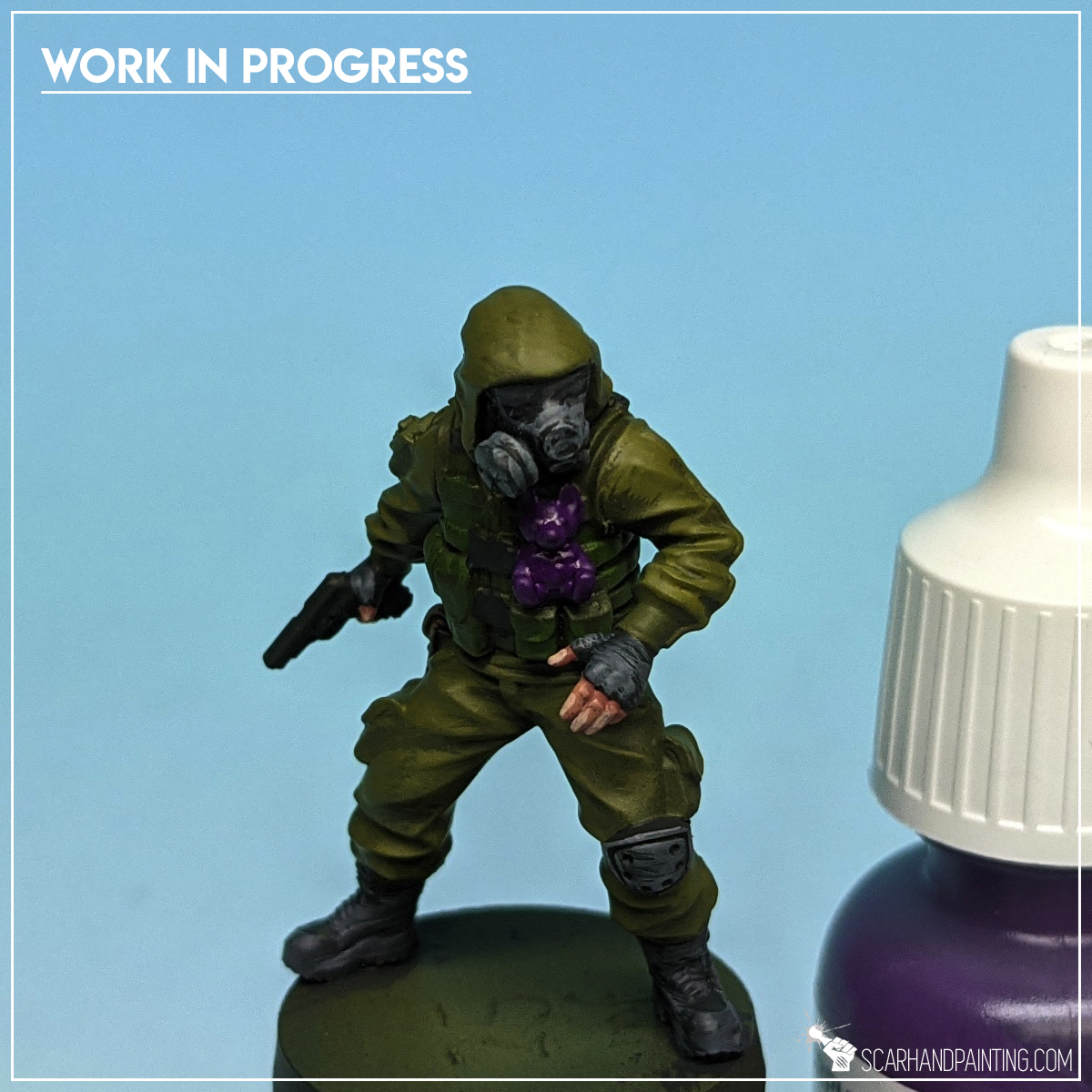
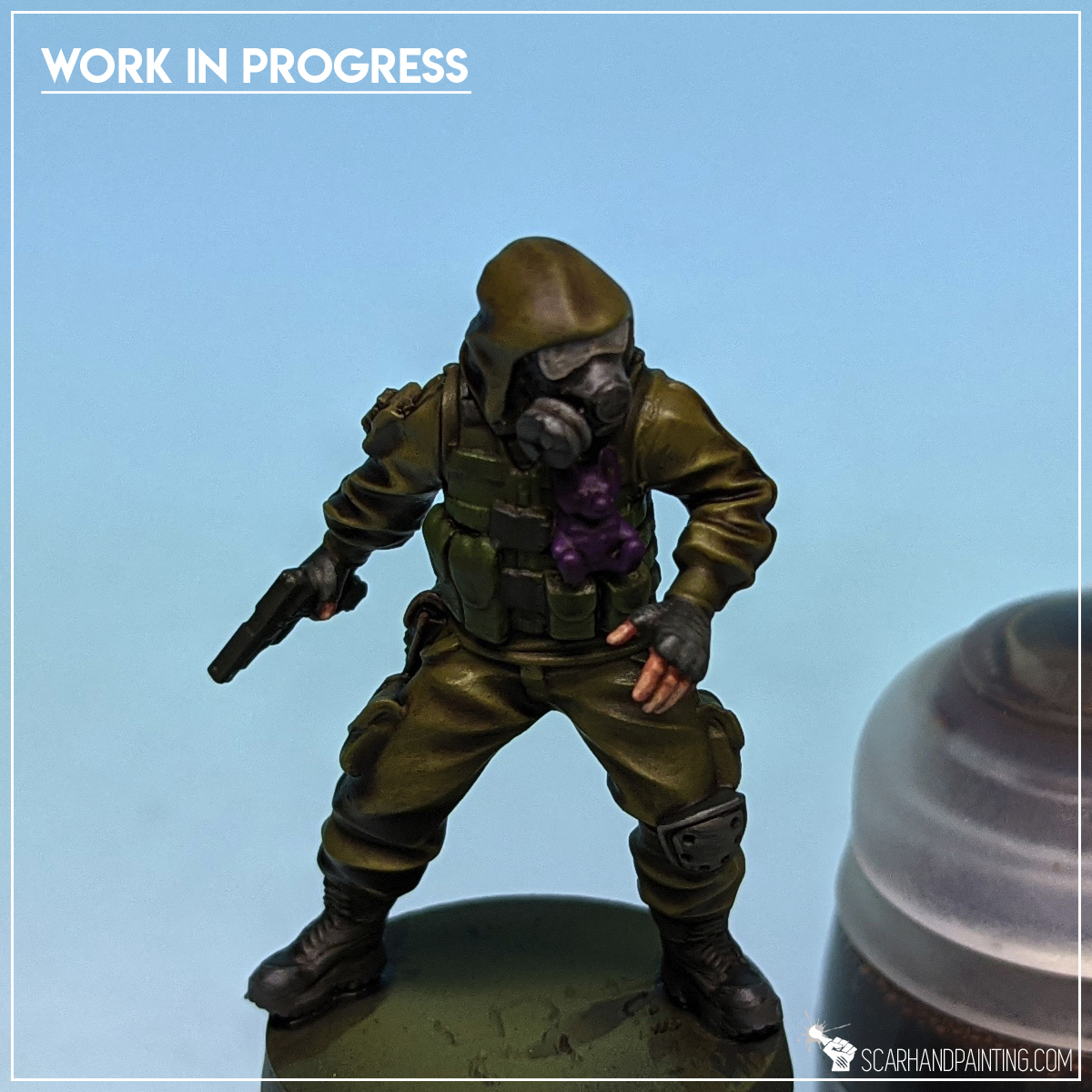
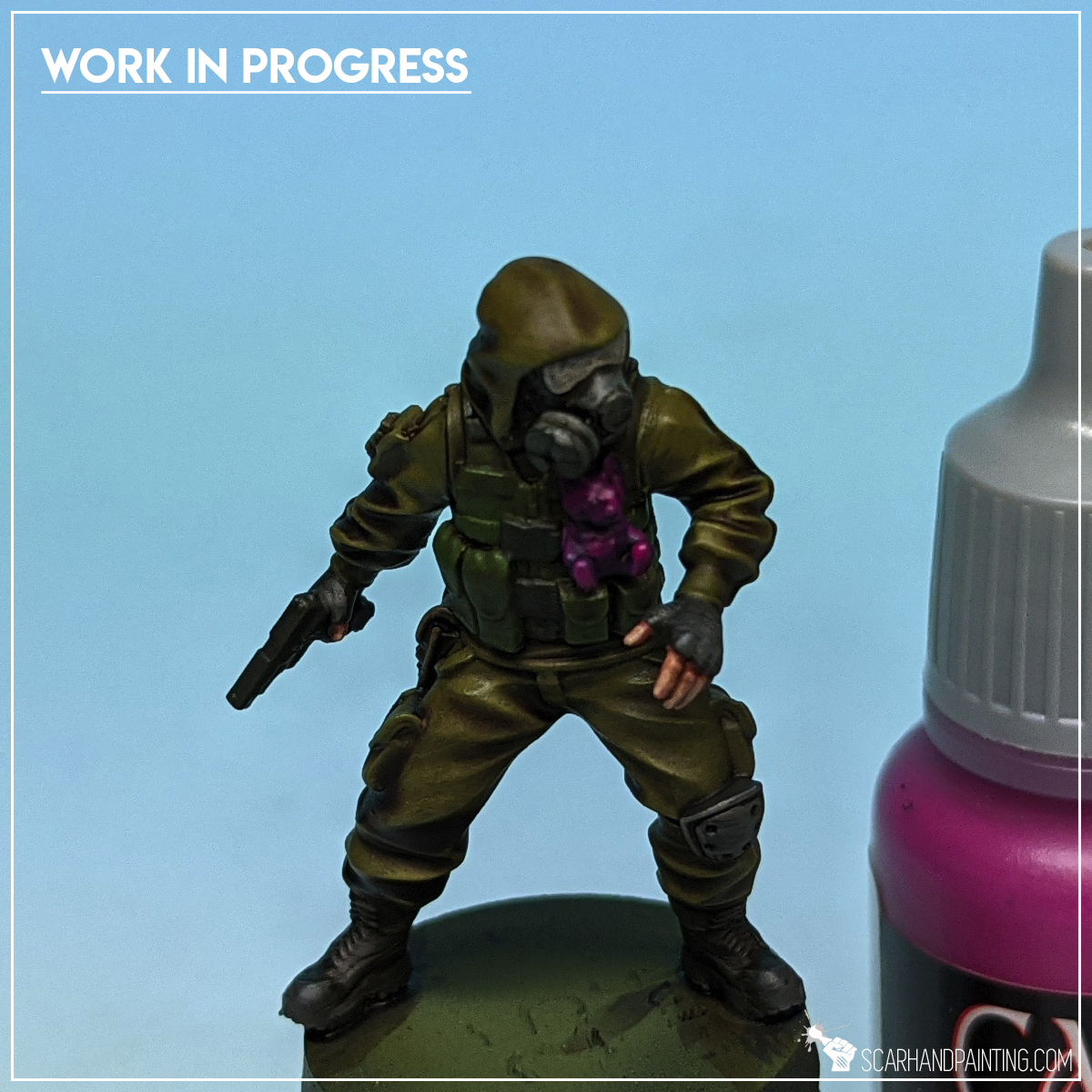

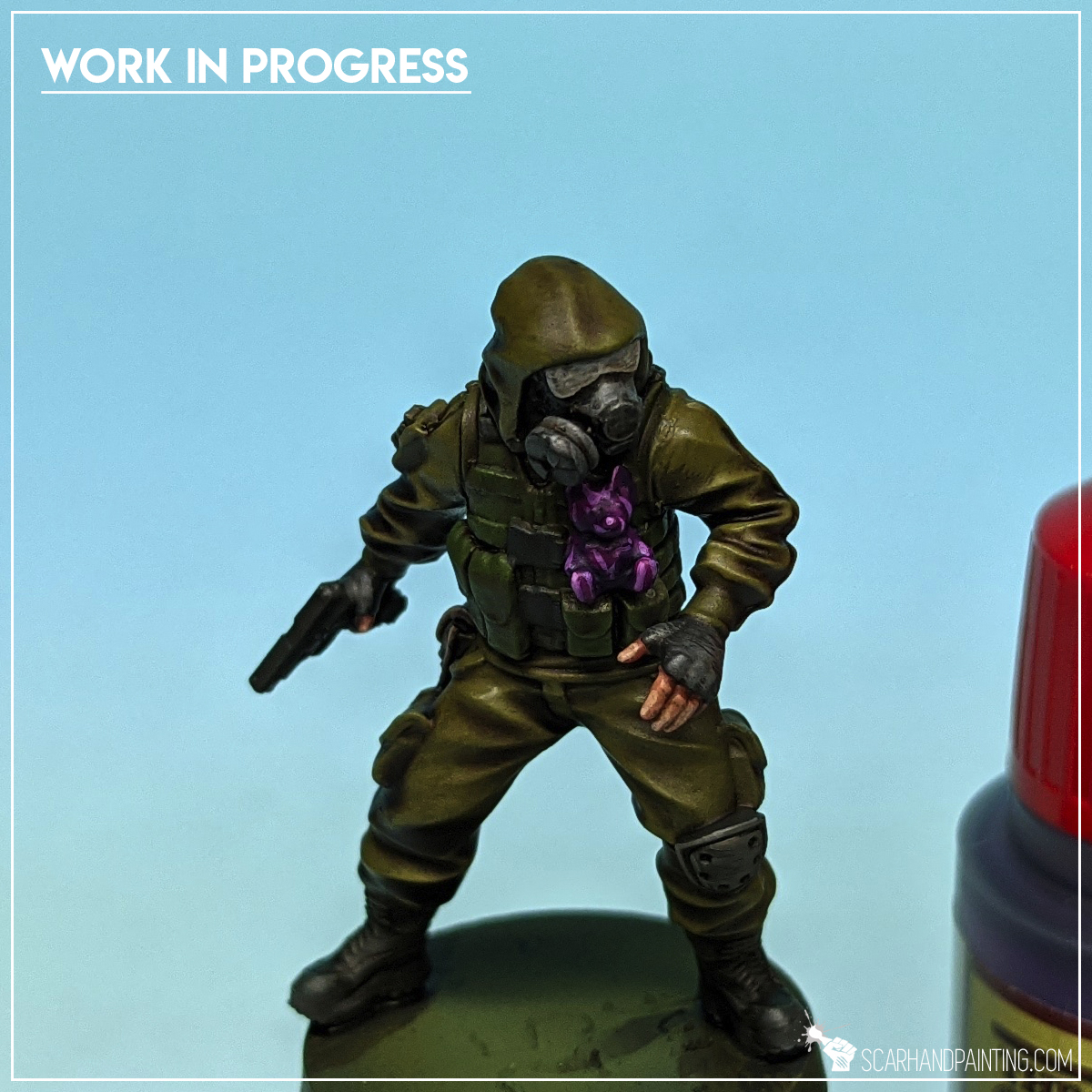
Step eleven: Yellow Kneepad
Once again I decided for a feature to stand out. I started with a strong, precise layer of Vallejo Heavy Goldbrown.
I then applied an irregular highlight of Vallejo Pale Yellow.
Finally I washed it with Army Painter Soft Tone Ink, which brought both layers together and made the knee pad look darker and used thoroughly.
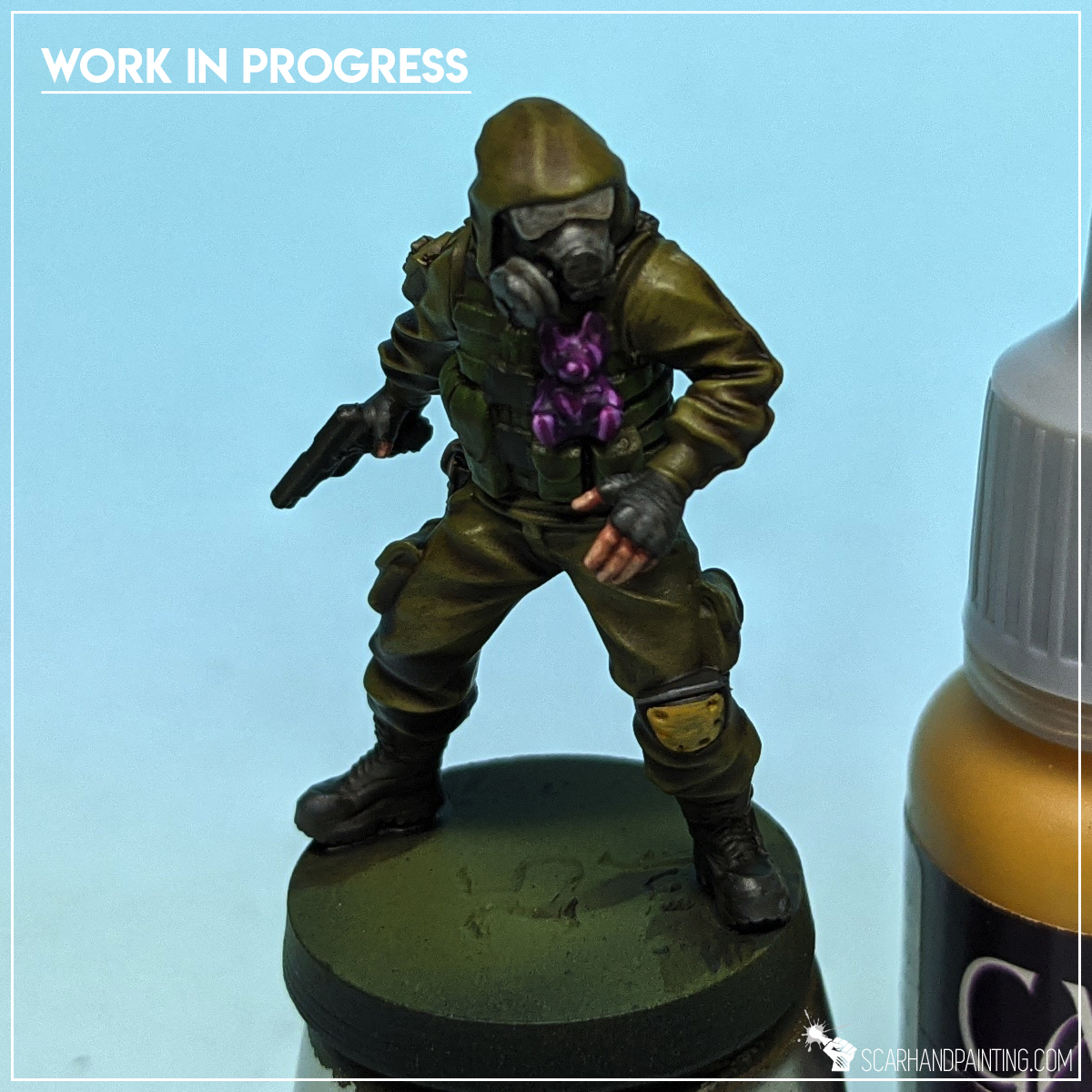
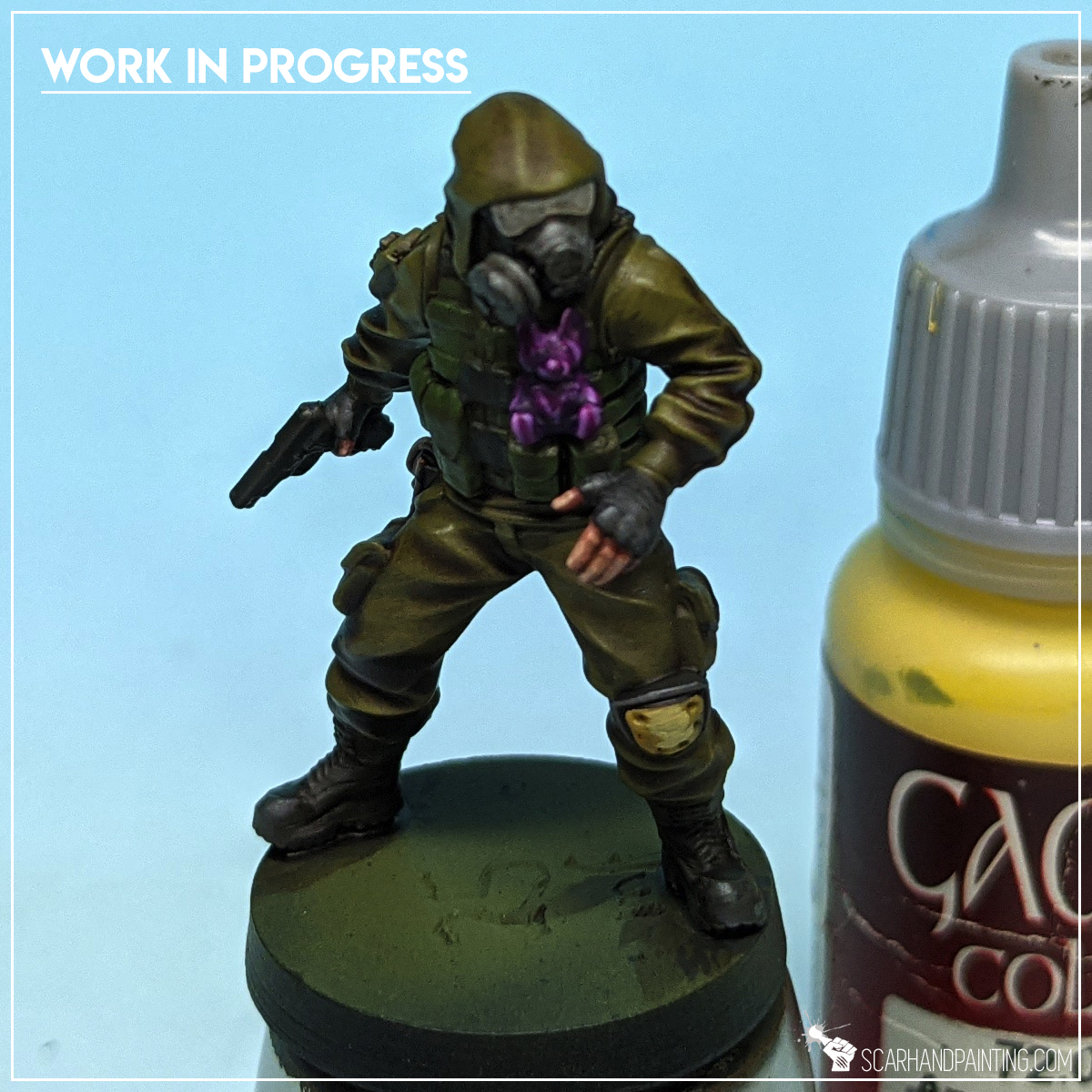
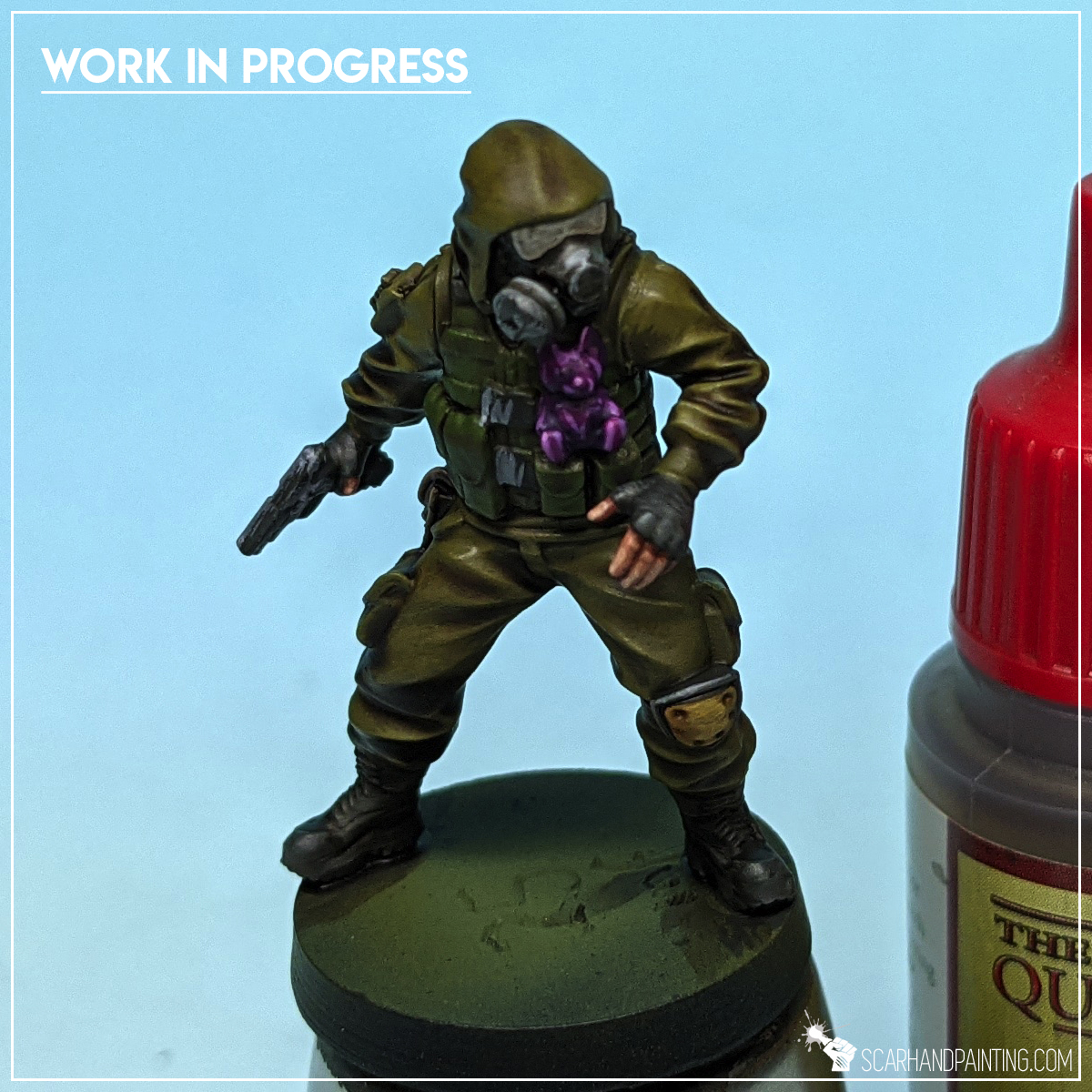
Step twelve: Basing
Time to finish the paint job with a proper looking base. For this purpose I decided to go with something easy to follow. One texture, one highlight and one tuft type for extra detail. I started with a large flat brush, applying a thick layer of AK Interactive Dark Earth texture. You can switch to any dark texture like for example Games Workshop Stirland Mud. I just prefer AK’s one because I find it easier to apply.
Once dry I drybrushed Dark Earth with Games Workshop Karak Stone.
Finally I glued an Army Painter Wasteland Tuft and re-painted base’s edge black afterwards.
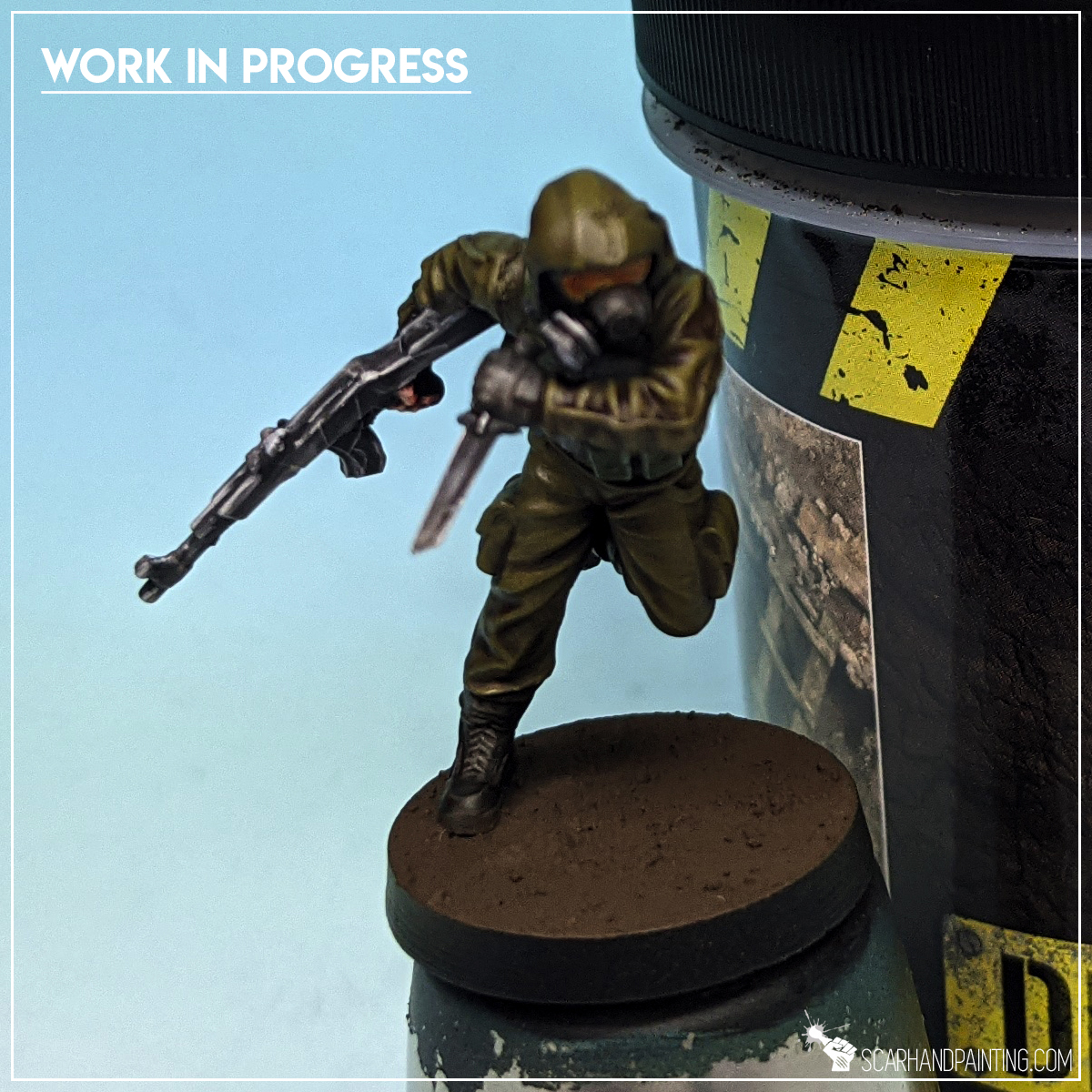
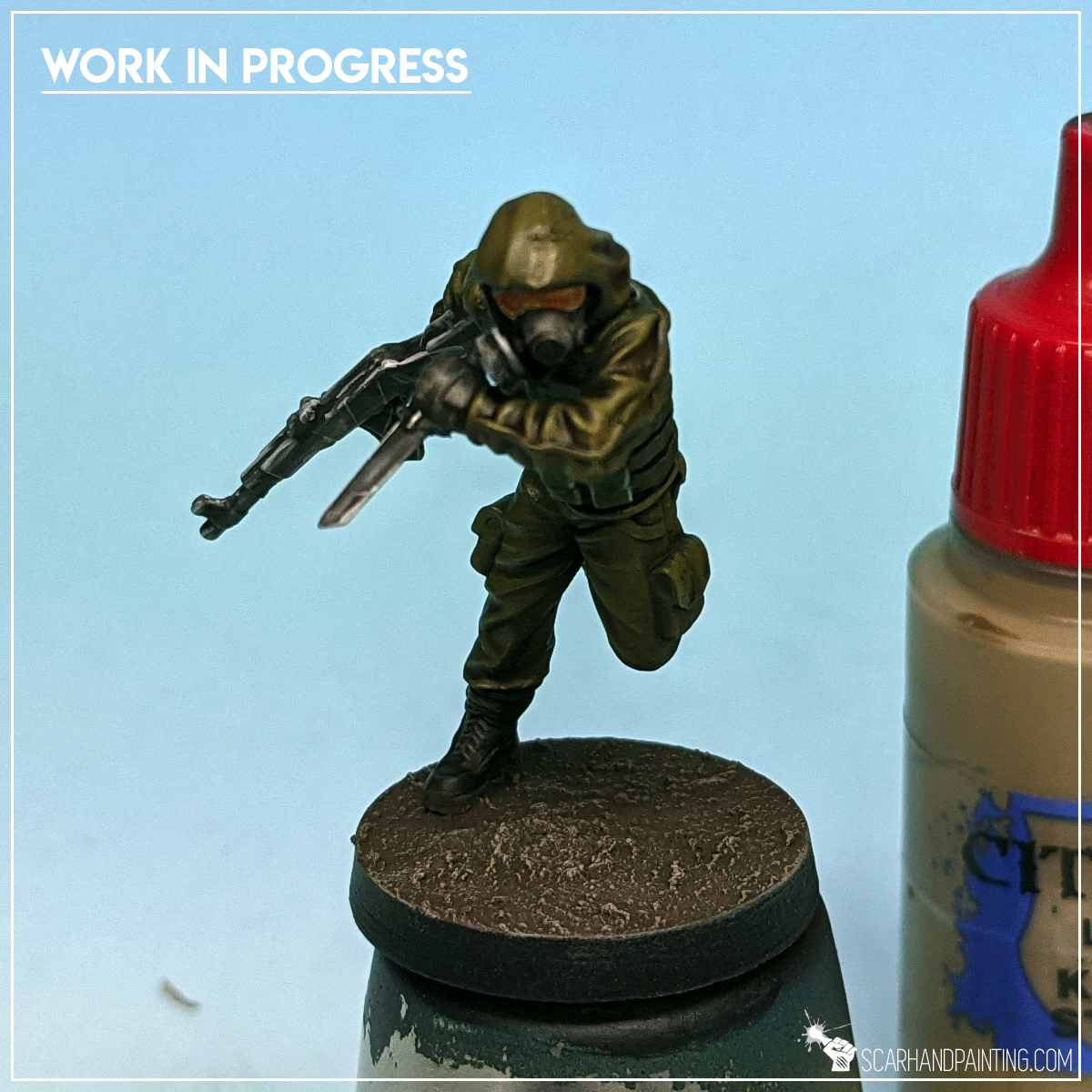


I hope you find this tutorial interesting. Be sure to let me know your thoughts in the comments below or via Facebook.or Instagram. I would also appreciate if you considered sharing this content with your friends, who might find it useful. Finally if you are looking for a professional miniatures painting service be sure to contact me with this contact form. I always reply within 24 hours, after which please check out your spam folder.
